Ahhhh, South Dakota! You gave us a little of everything … the Bad, the Bold, and the Beautiful! Specifically, the Bad(lands) and Bad travel, the Bold adventures, and the Beautiful views and scenery!

Leaving Utah and heading for South Dakota served up some of our most punishing travel yet. A freak Summer
Blizzard moved through the west, blanketing the area with punishing winds, frigid temps and snow-snow-snow.

Important questions: Is the Lucky Charm winterized? (no) Does the Lucky Charm have 4WD? (no) Do we have chains for the Lucky Charm tires? (no) Do we have experience driving the Lucky Charm in snow or ice? (heck no) Should we have been out there on the road? (definitely no)

Though we can laugh about it now, getting over Vail Pass (10,662 feet elevation, a challenging climb even in the best of circumstances) was truly terrifying. The freeway got closed as we approached, and we huddled under an overpass after being forced to exit the freeway by Highway Patrol. We eventually followed a snowplow at 10 MPH for a couple hours along frontage roads to make it over the Pass. Tow trucks were running back and forth, cars and trucks were abandoned in ditches, the roads were icy, and I was crying (just a little) in the passenger seat!
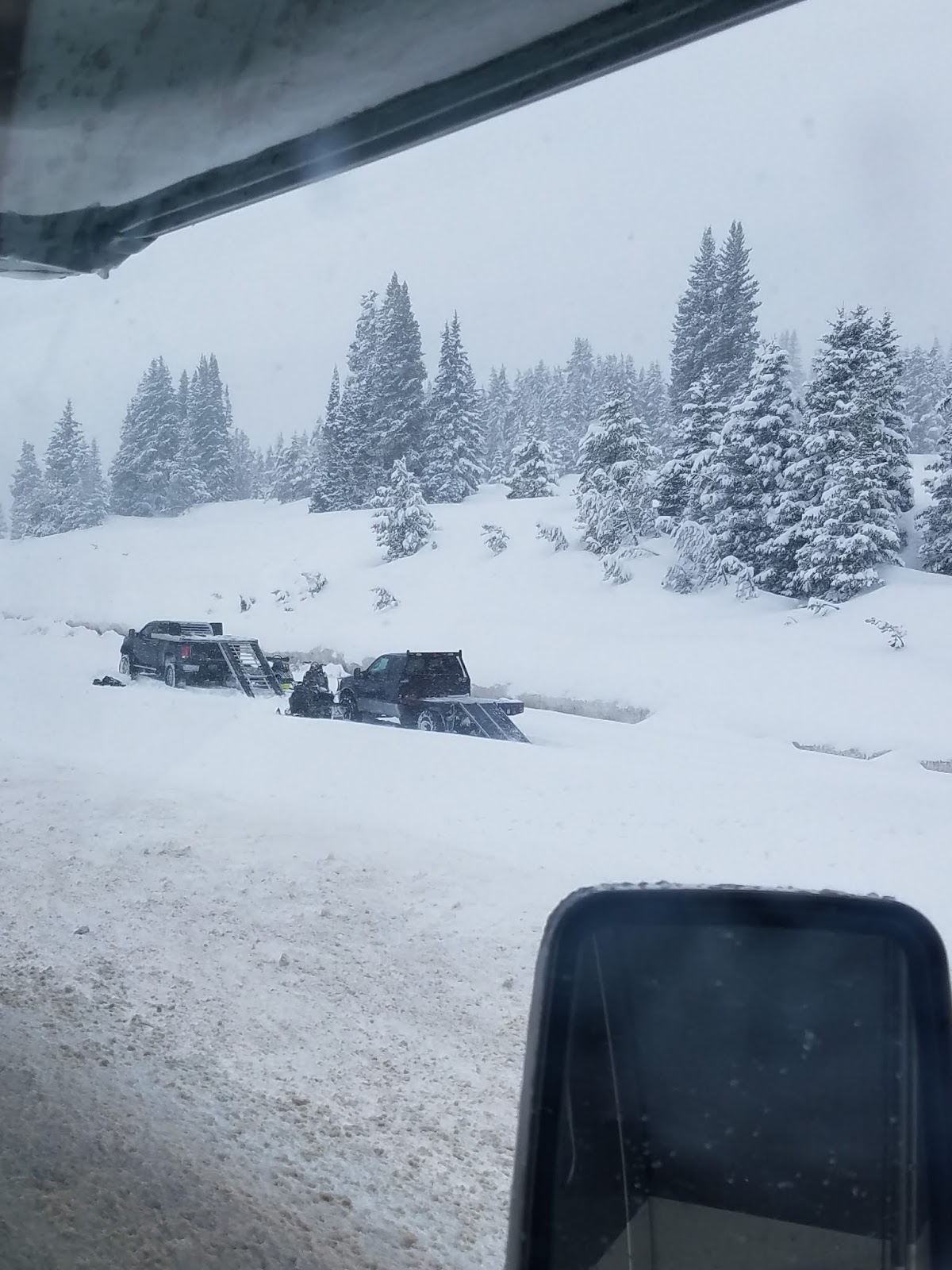
But, all’s well that ends well, and Philip actually did an awesome job of driving, earning many gold stars. Before that fun experience, we had our first stay at a “Harvest Hosts” location, a club that lets you stay overnight for free at a variety of privately-owned locations (mostly wineries, but also farms, museums, and other interesting places). We stayed at the charming Stoneyard Distillery outside Glenwood Springs.
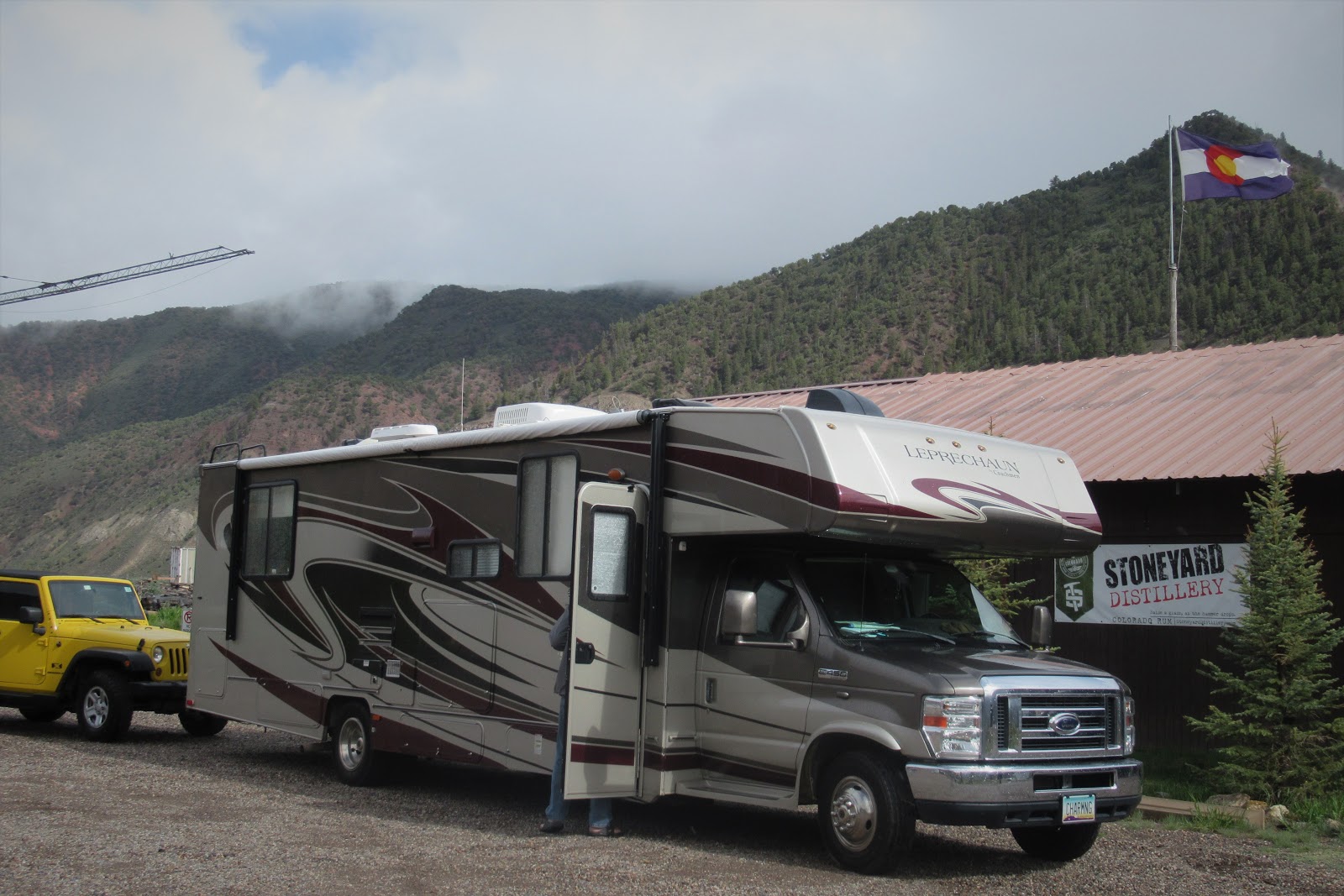
While working our way through the tasting menu of Stoneyard Distillery’s spirits, we spent pleasant time comparing “notes from the road” with fellow RV’ers and new friends Dennis and Janet, who were making their way north from Florida, and the charming proprietor, Max.

Stoneyard distills their delicious spirits from local beet-sugar and adds flavors to make five different varieties. Our
favorite, the Lucky O Horchata Specialty Spirit, had hints of cinnamon, vanilla and coconut, and we bought a couple of bottles to go – it’s delicious mixed with Sprite!
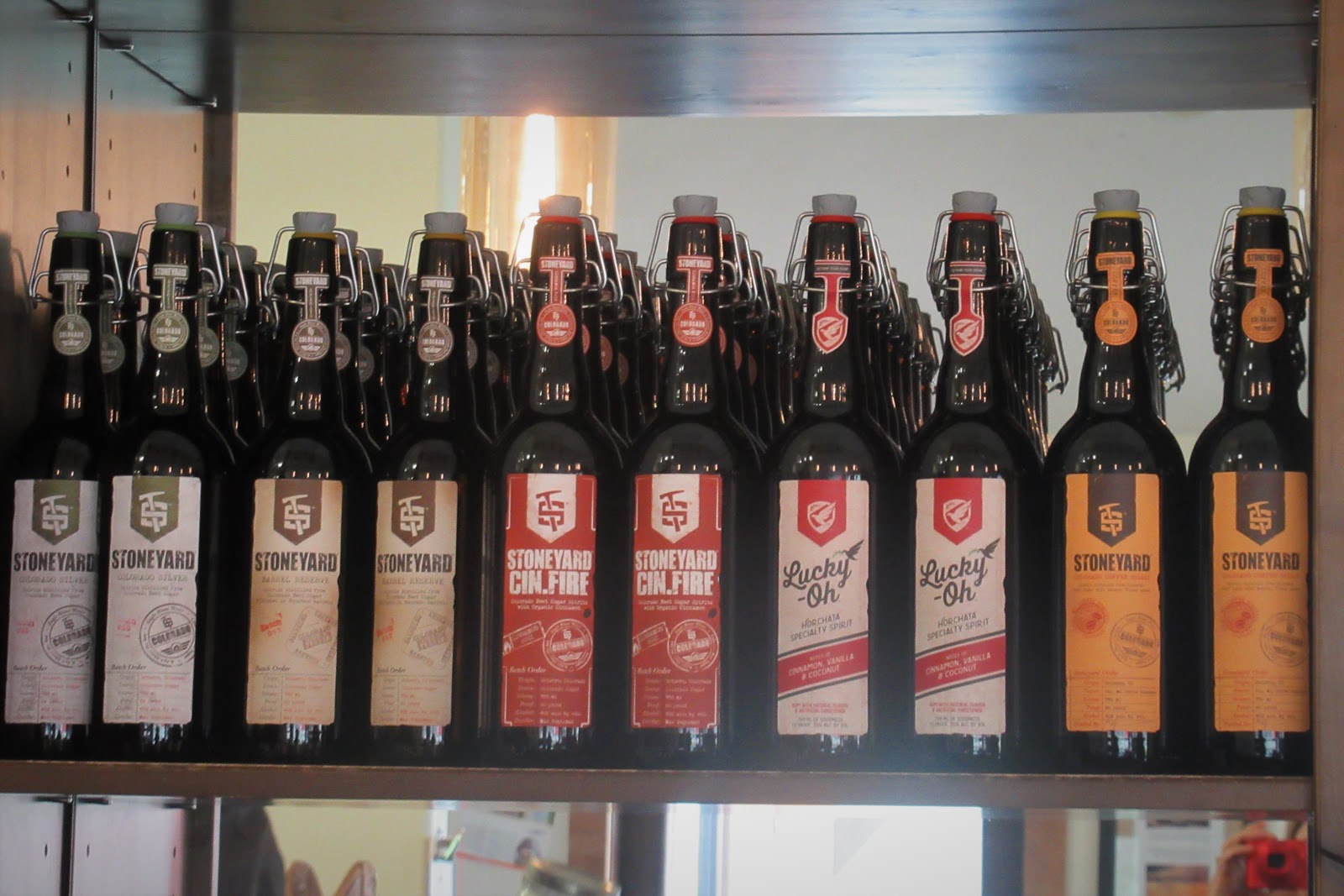
Max also invited us to try their “not for daily consumption” (also not for sale to the public!) grain alcohol creations, stewing away in large mason jars, including one that tasted just like a Bloody Mary. Our slumber party at Stoneyard Distillery was a really fun adventure!

After a snowbound stop in Wheatland, Wyoming, we made our way to the Black Hills of South Dakota.
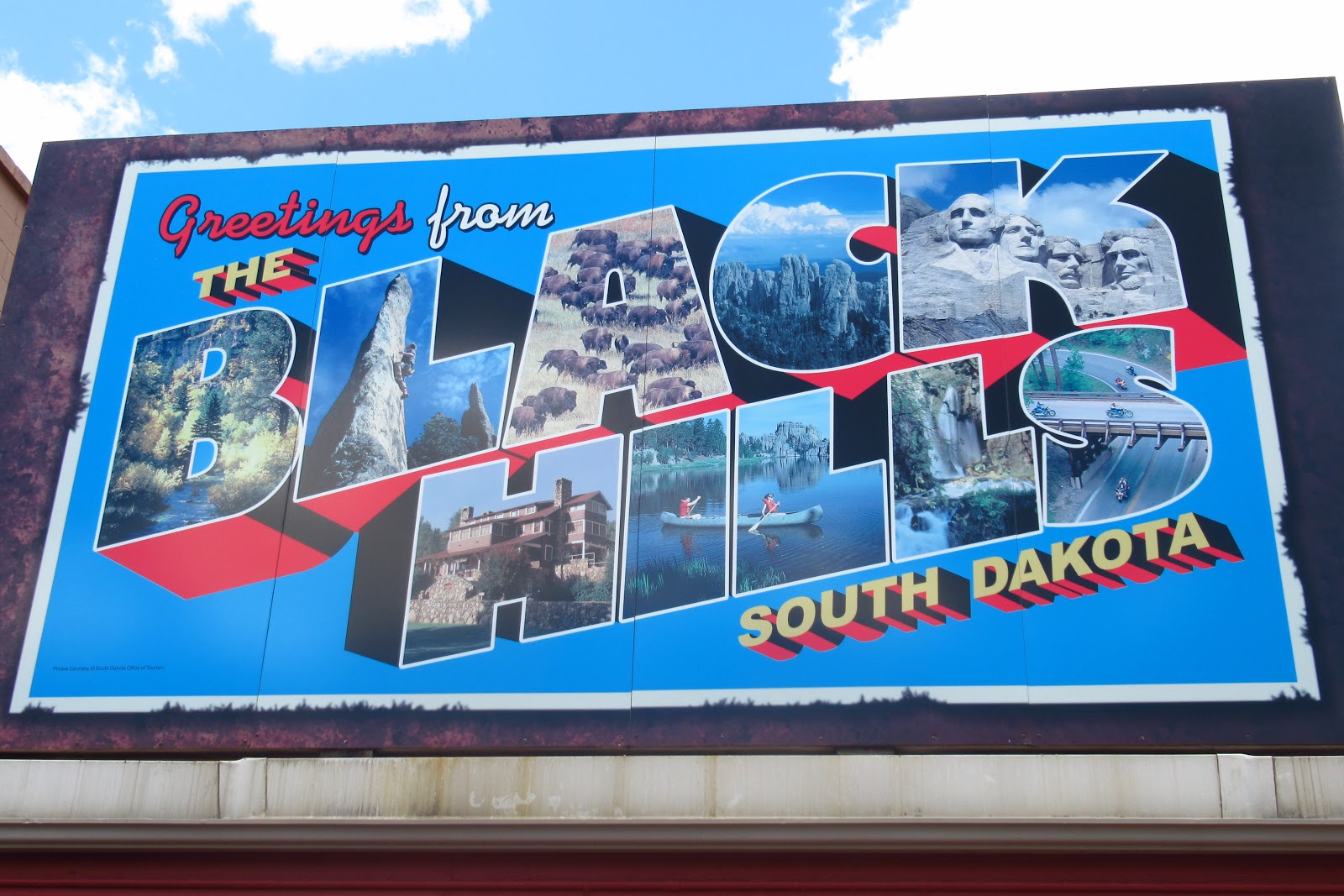
First up, Wind Cave National Park, home of the densest cave, with the greatest passage density per cubic mile, in the world!

Though we’ve visited other cool caves like Kartchner Caverns and Carlsbad Caverns, Wind Cave is known for the unique honeycomb-like rock formations known as “boxwork,” which are found on the walls and ceiling of Wind Cave. 95% of the world’s boxwork is here, and the other 5% is in other locations in the nearby Black Hills.
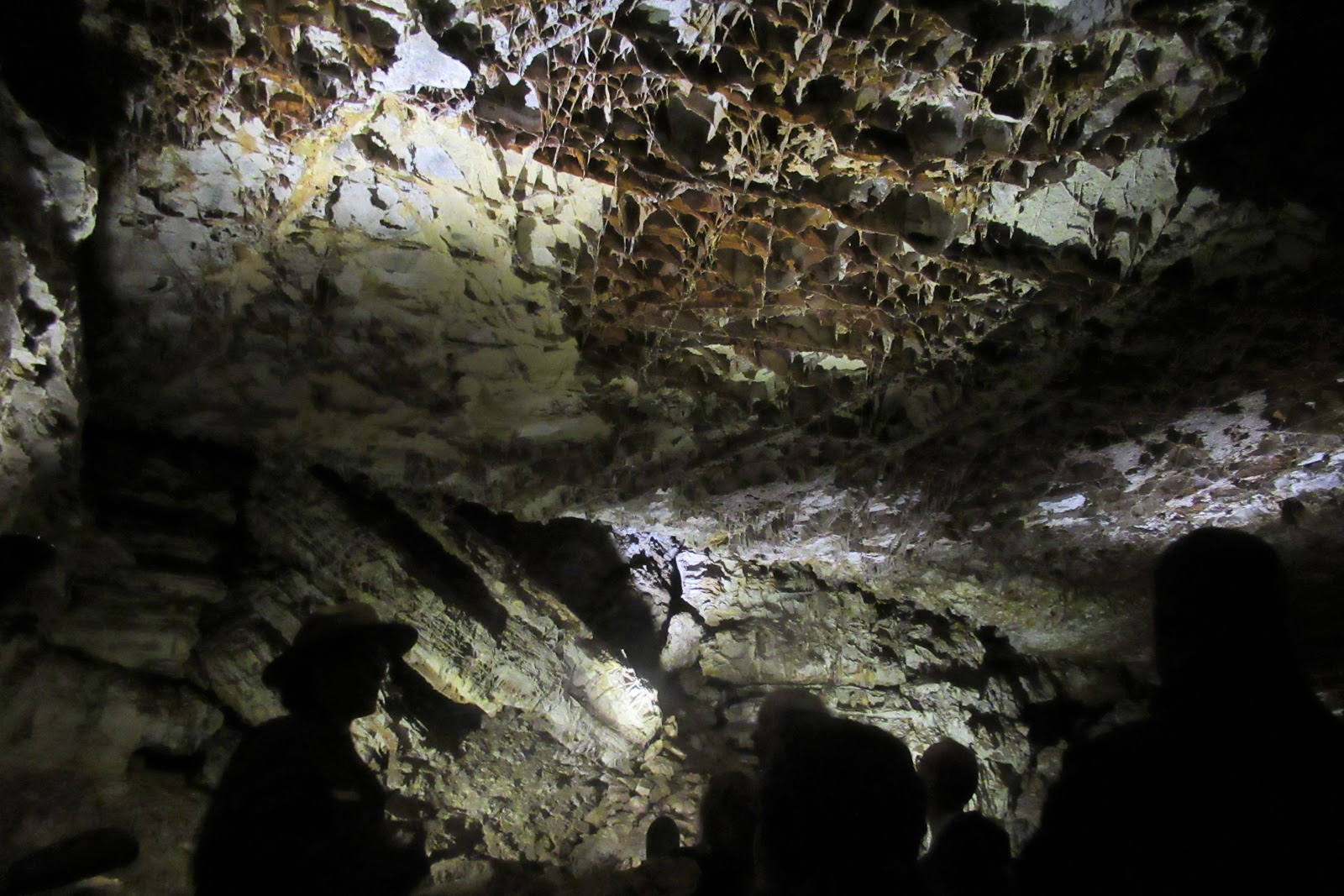 |
| You can see the outline of people in the dark shapes at the bottom. The boxwork is on the ceiling overhead. The white-yellow patch to the left of the boxwork is where it was likely chipped off as a souvenir before the park became protected. |
Boxwork is so named because it resembled the square mail box slots in old-timey post offices. Cave photography is the worrrrst, so sorry this picture isn’t better. But it was gorgeous and delicate in person, with the “sides of the boxes” being formed because (science lesson ahead) the carbonic acid in water seeping downward dissolved the softer rock surrounding the box sides faster than these lines, which were a different kind of harder rock. Wow, that was a terrible explanation.

Wind Cave is also one of the longest (140 miles) and most complex caves in the world, with only a portion of it explored so far and something like 150 miles of passages being contained in just one square mile of real estate. Just a few of the passages are displayed here.

Wind Cave is so named because it’s a “breathing” cave, with the barometric pressure at the opening constantly changing. When it was discovered by area ranchers, the guy’s hat was sucked into the tiny hole shown below, never to be seen again. The ranger used a white paper ribbon to demonstrate that today the wind was flowing out. This action can change by the minute … sometimes it goes in, sometimes it goes out, kinda like my waistline.
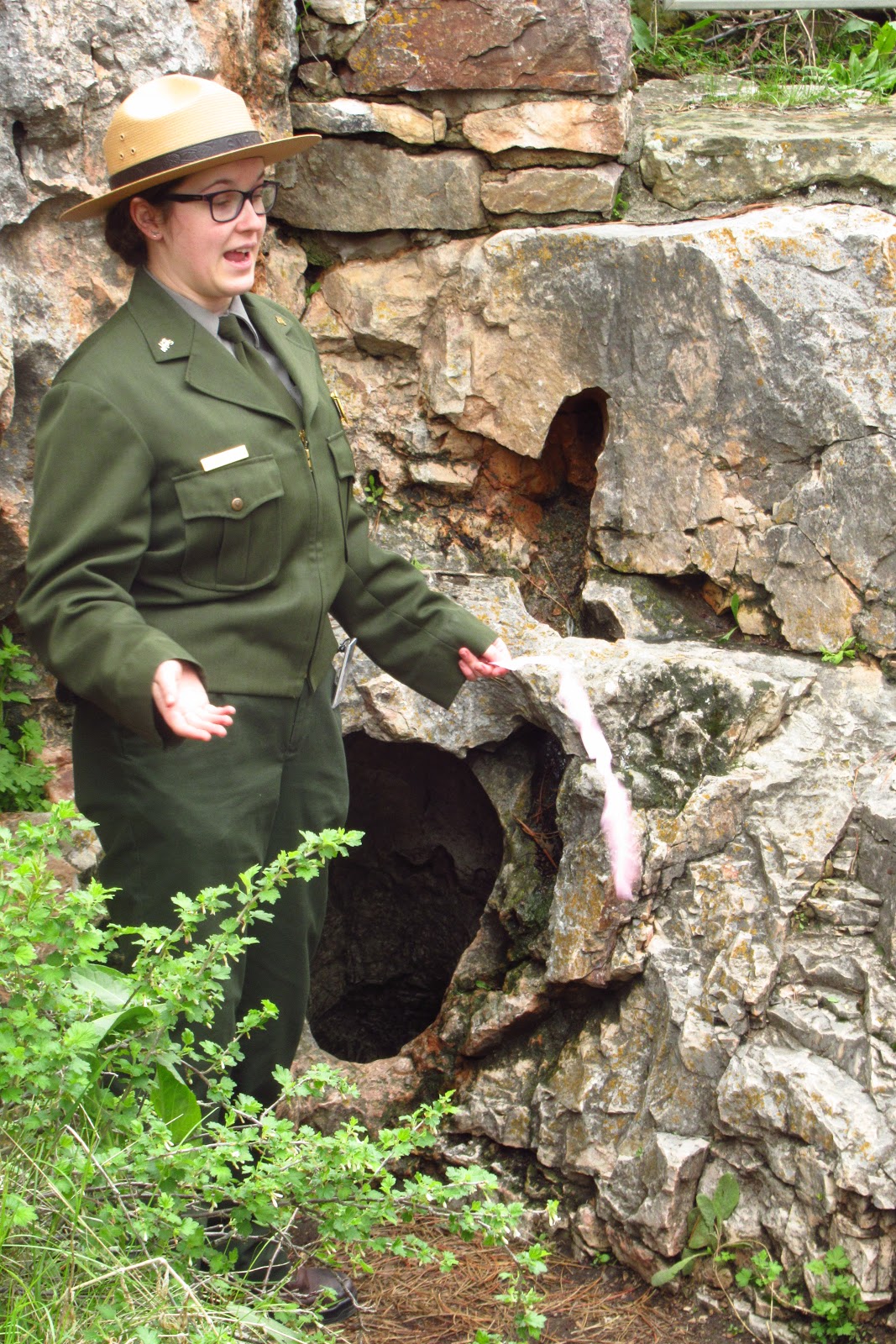
That tiny hole was the only entrance to the cave for a long time, but now there is an actual door to the 300 steps down (but blessedly, an elevator back out). Above the Cave, it’s flat prairies and windswept grasses (and snow, for now) for as far as the eye can see.

It’s also home to a variety of wildlife, including antelope and bison.
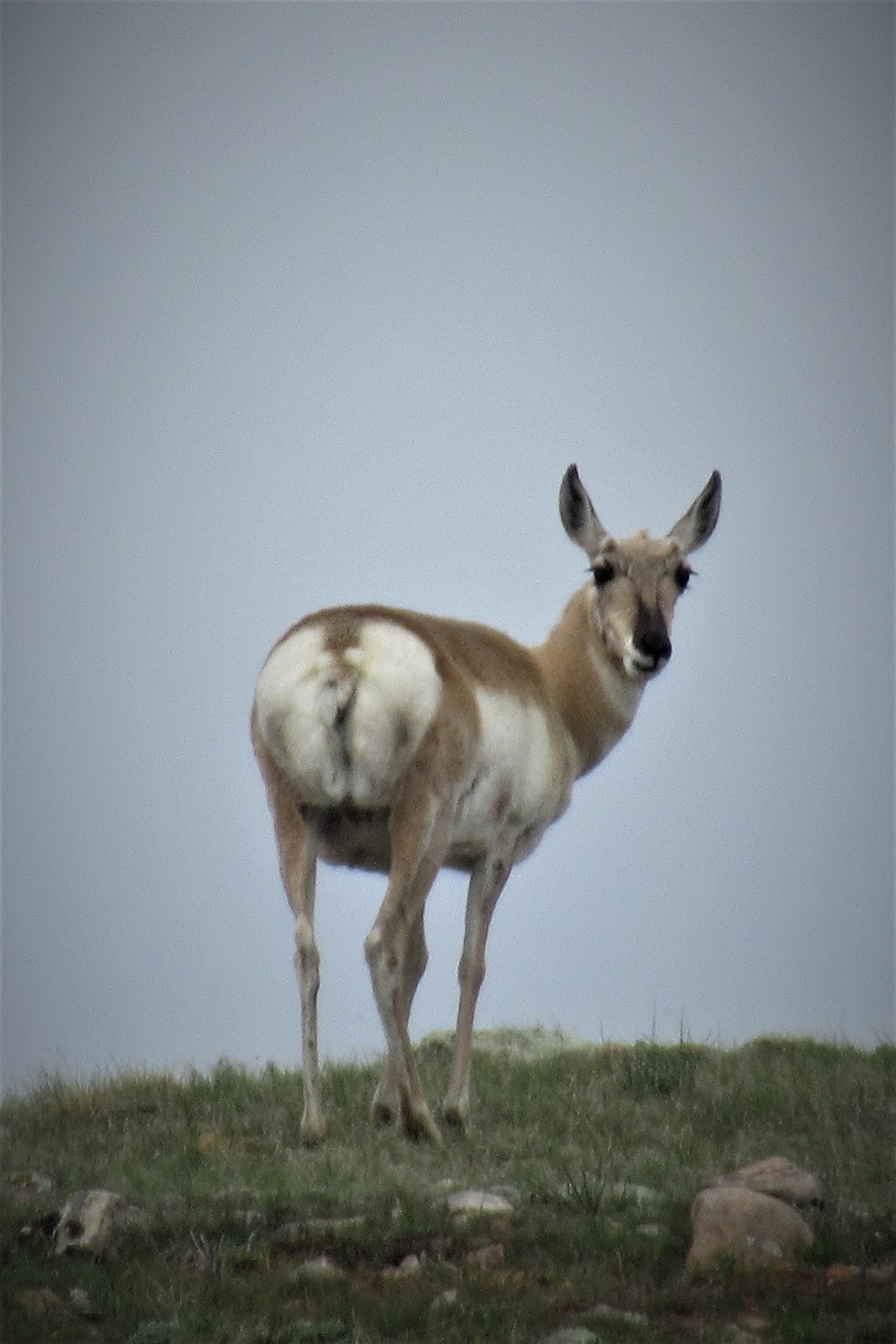
We stayed at the Elk Canyon Campground inside Wind Cave National Park, which clearly needs to be renamed to Bison Canyon Campground, since we saw many bison and zero elk.
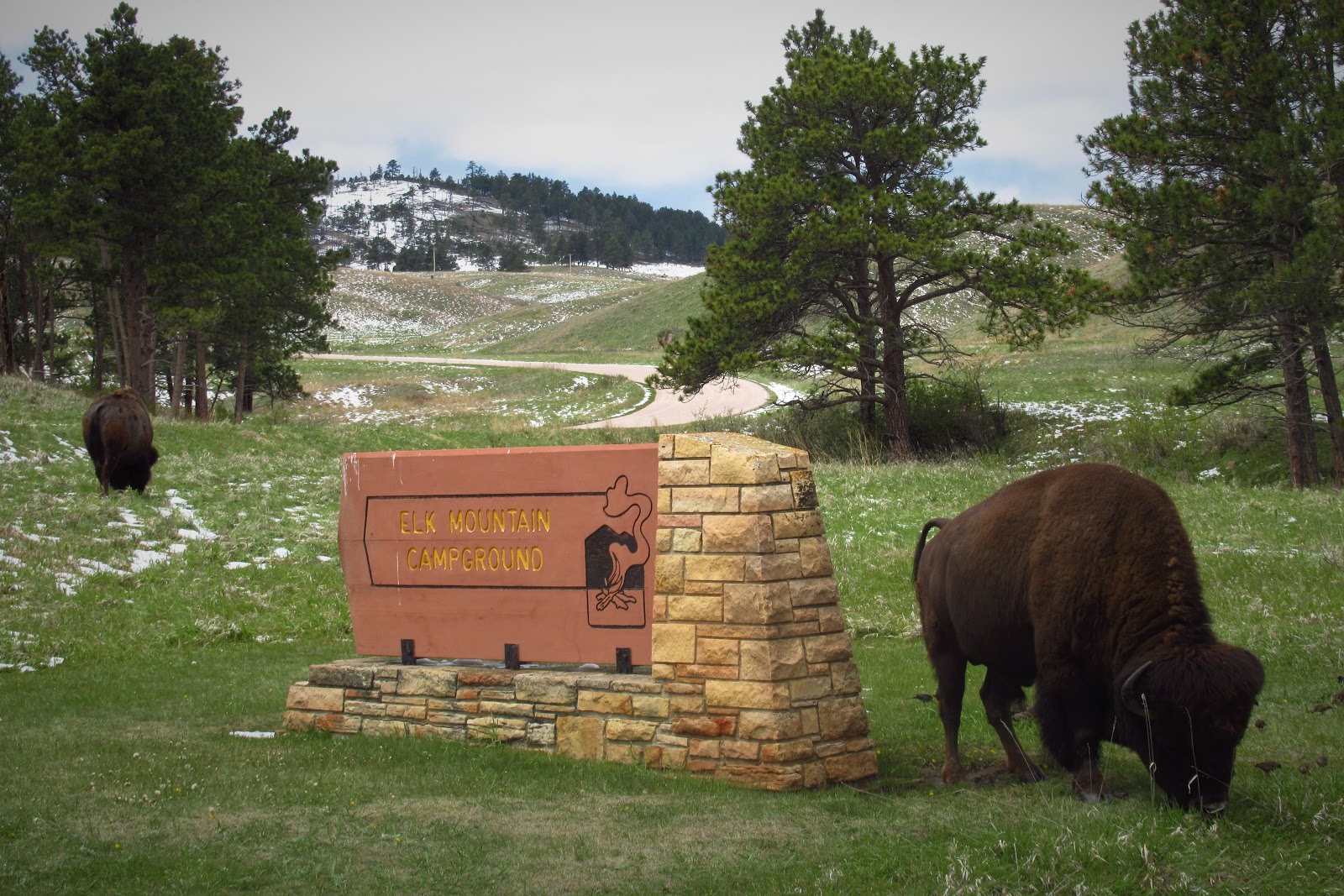
How’s this for a beautiful home-away-from-home?
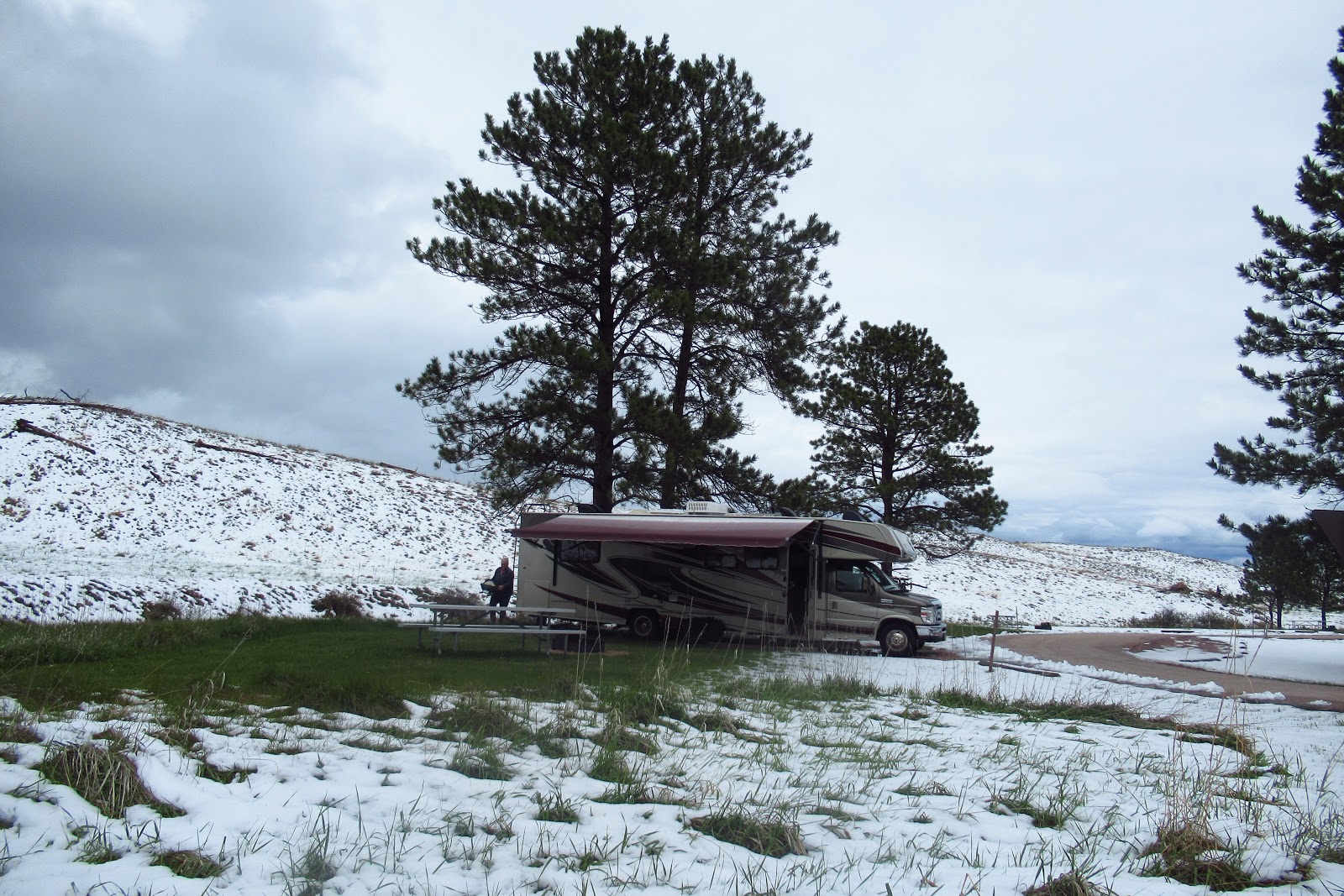
In the nearby town of Hot Springs, The Mammoth Site is the location of a fascinating active paleontological dig site. Back in the 70’s, a real estate developer started scraping the land for a subdivision, when mammoth bones were suddenly unearthed. He immediately stopped work and donated the land to science, scrapping any plans to make million$. My darling husband, who works in land development, sat silent for a few minutes and then said “that would be a very hard decision.” I did not demand that he elaborate, preferring to continue believing he’s a good person. 🙂
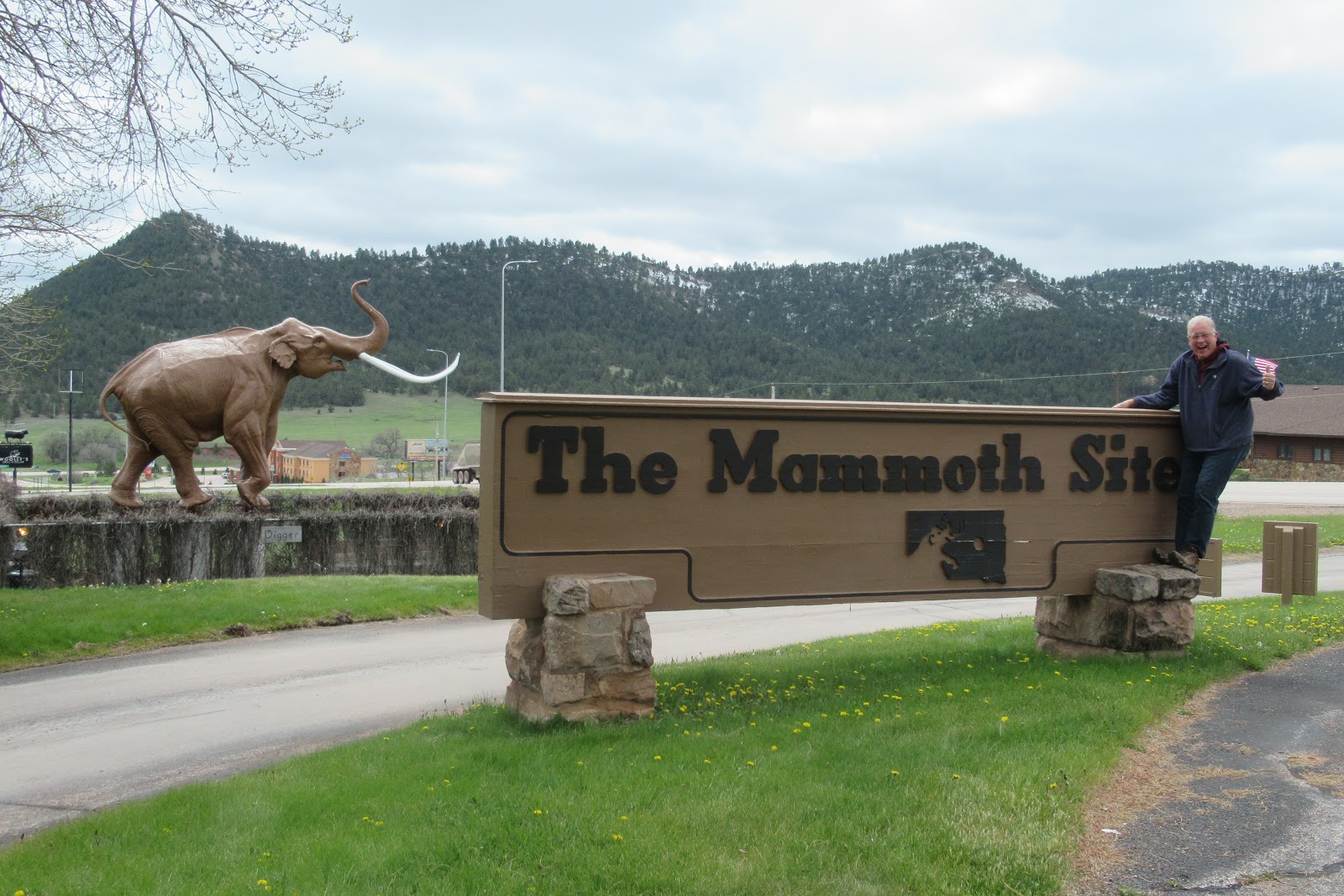
Back in the day, volunteers labored outdoors, and from the looks of them, many beers were consumed along the way, all in the name of science of course.
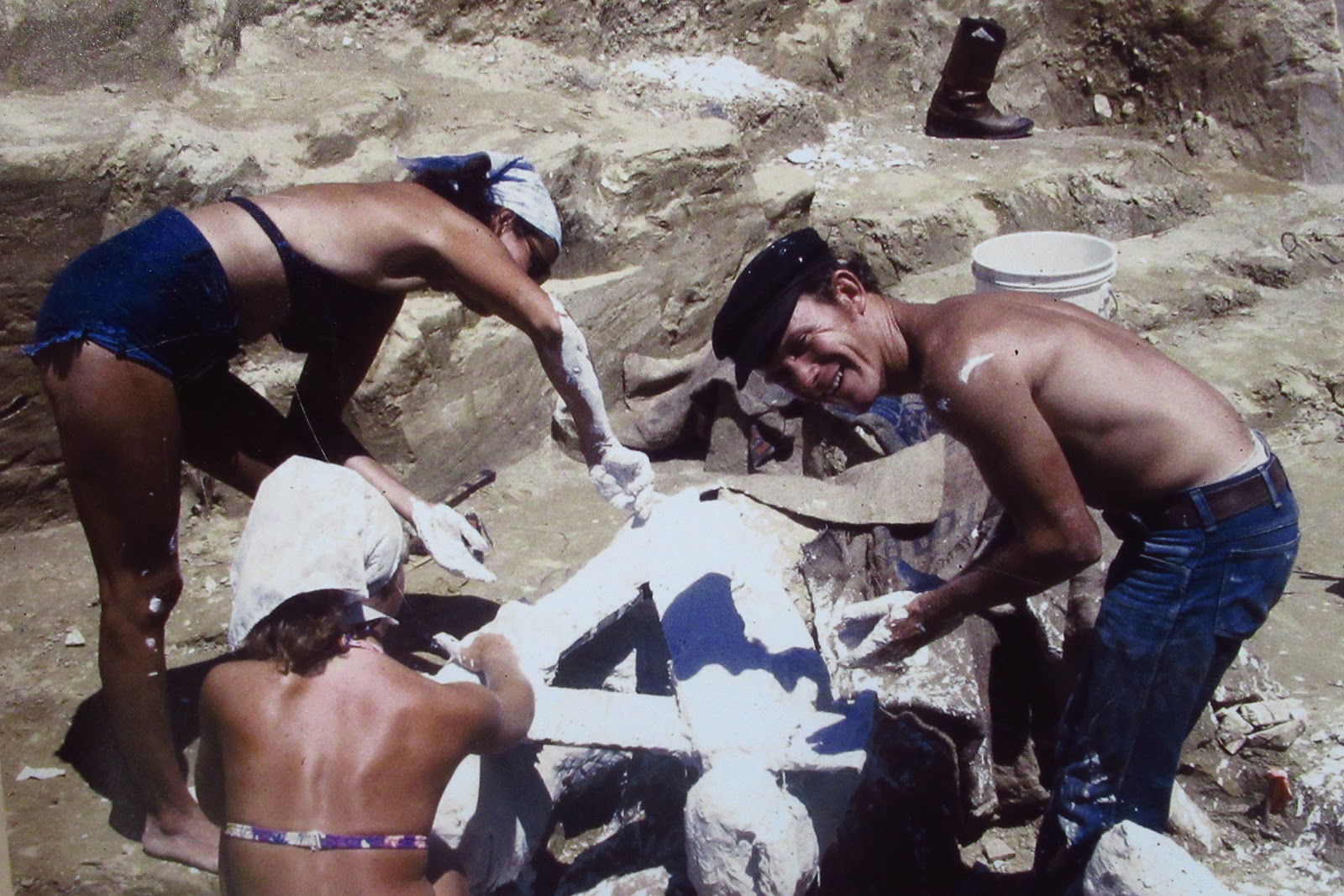
Today, the site is covered inside a beautiful building and 61 mammoths have been found here.
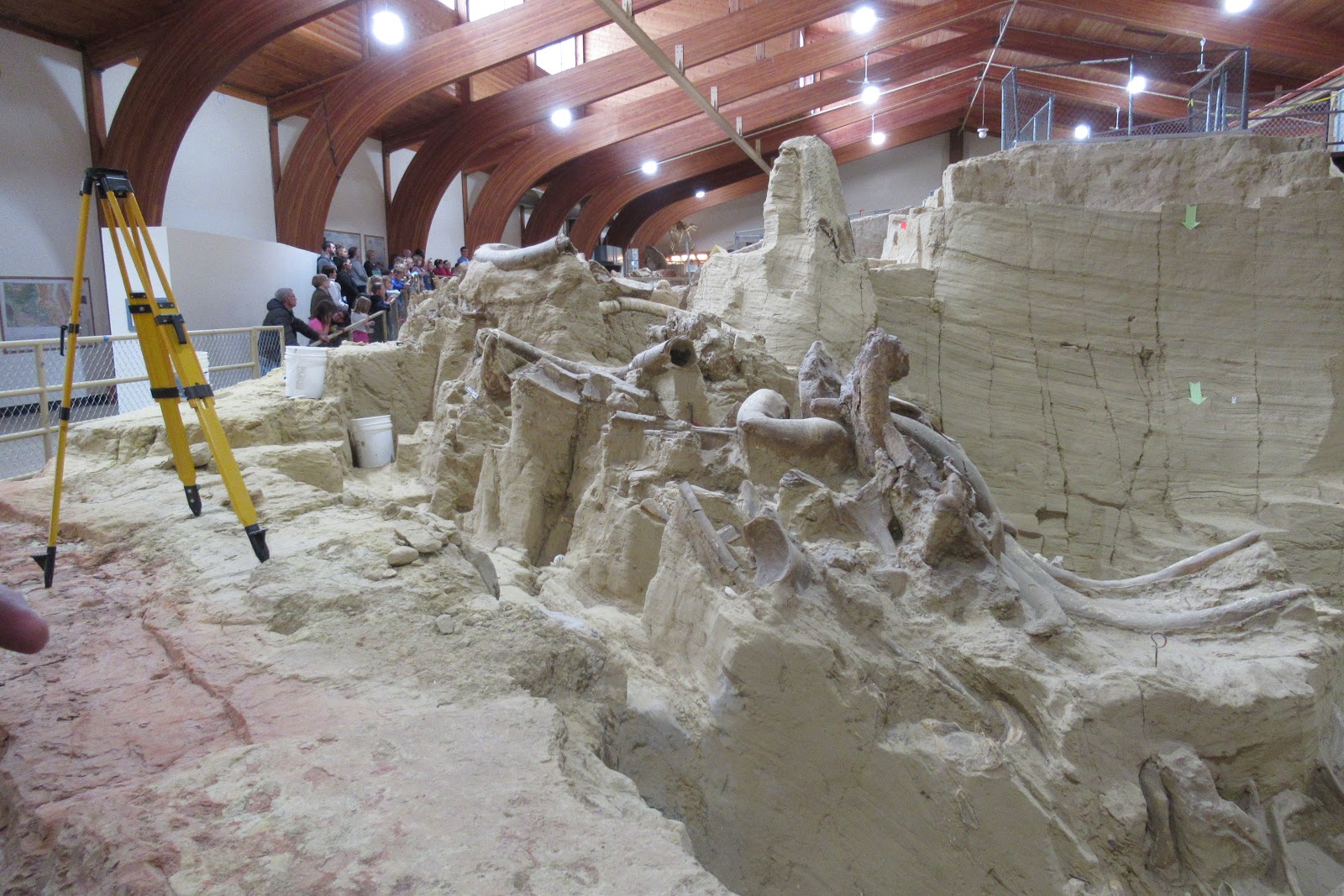
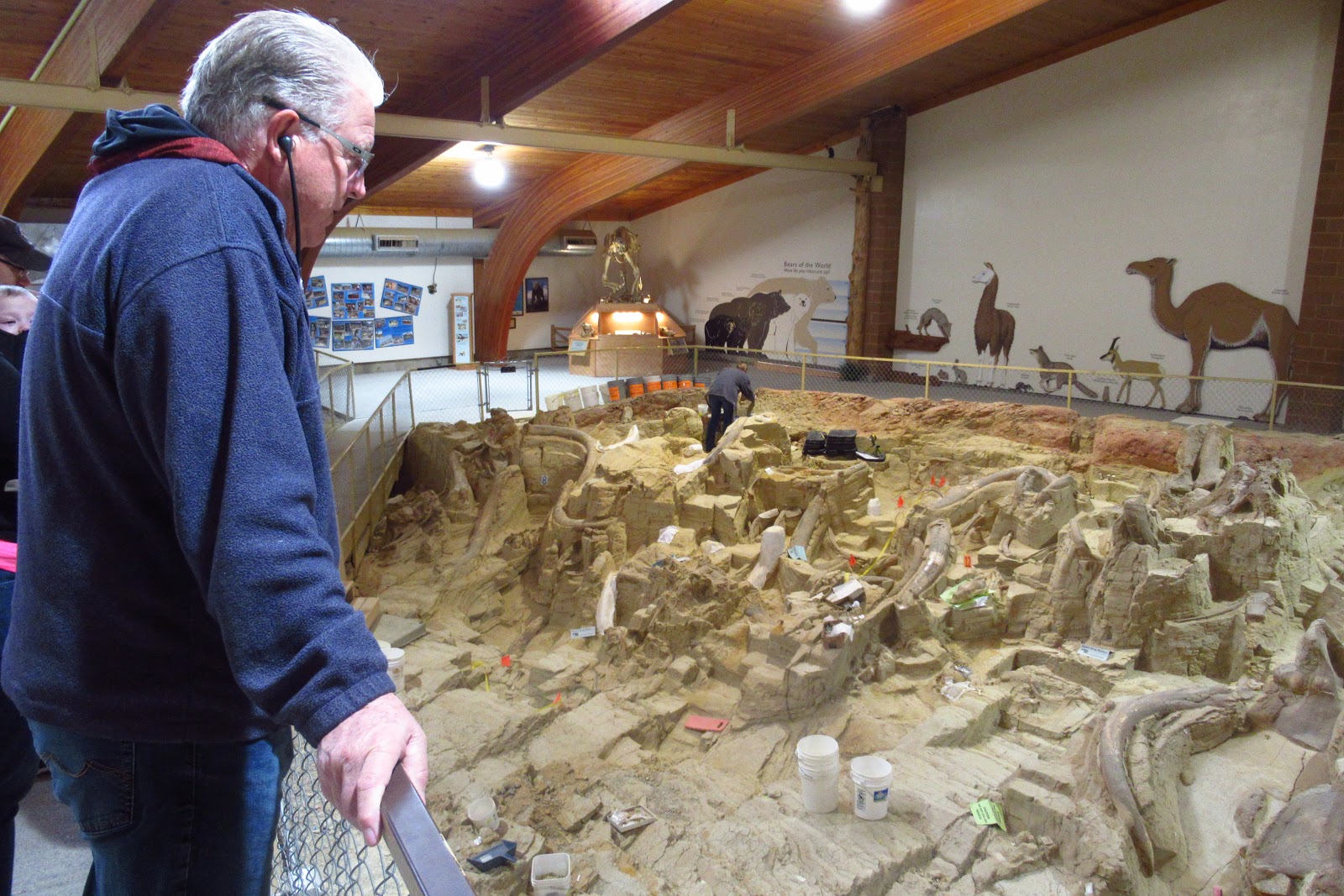
All of the mammoths are male, because young males were kicked out of the herd by the alpha male as soon as they hit puberty and start lookin’ fly. They were then doomed to wander alone for eternity, or until they picked up some babes and became harem leaders of their own. Here’s a ribcage … now that would make some good BBQ.
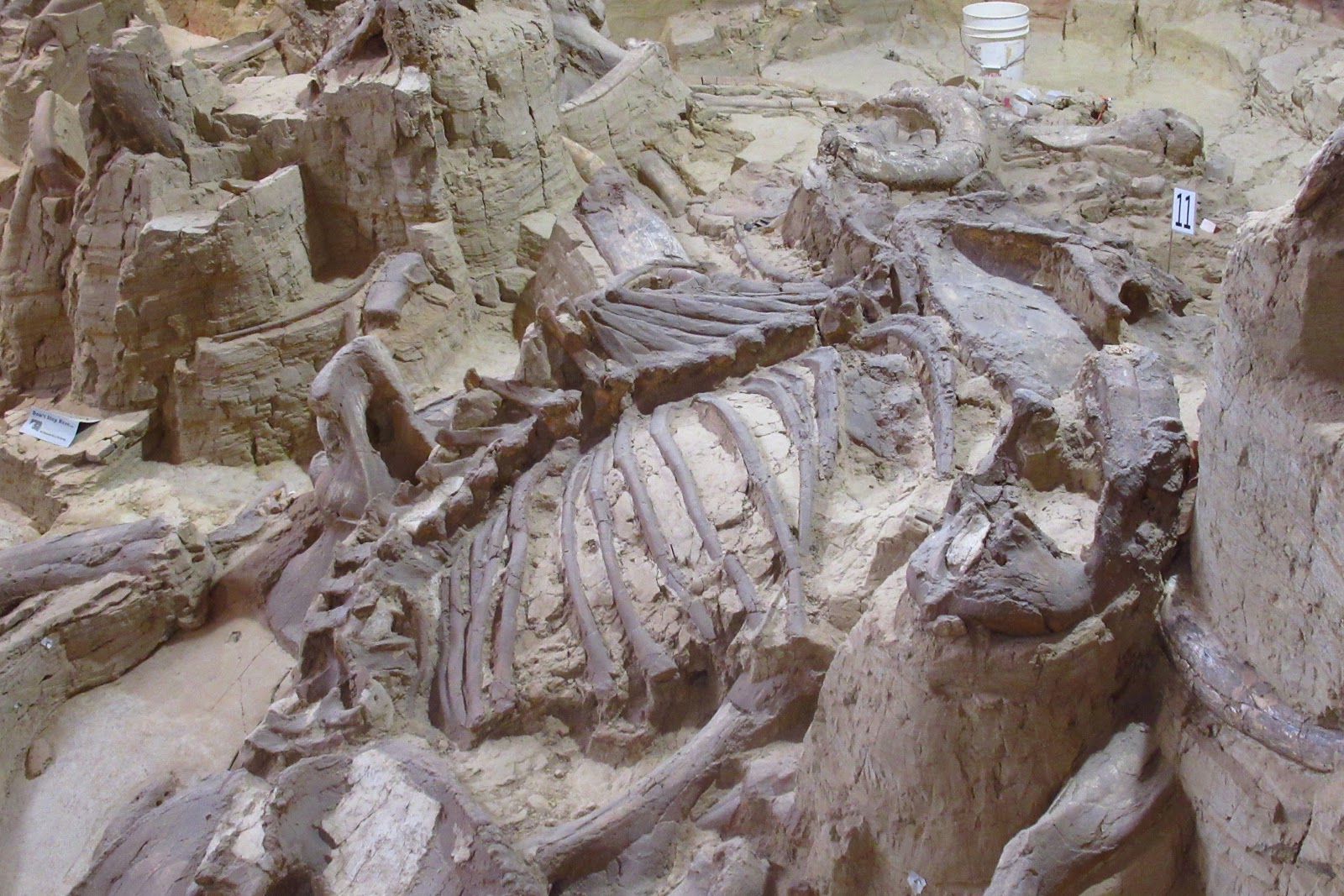
Why were 61 mammoths found in such a small area? Because a huge sinkhole was located here millions of years ago. The mammoths came to the edge of the hole to get water and fell in, one after another, over many years. Personally, I believe it’s because they were all male and refused to stop and ask for directions. 58 of the 61 were the biggest size shown here, the North American Columbia Mammoth.
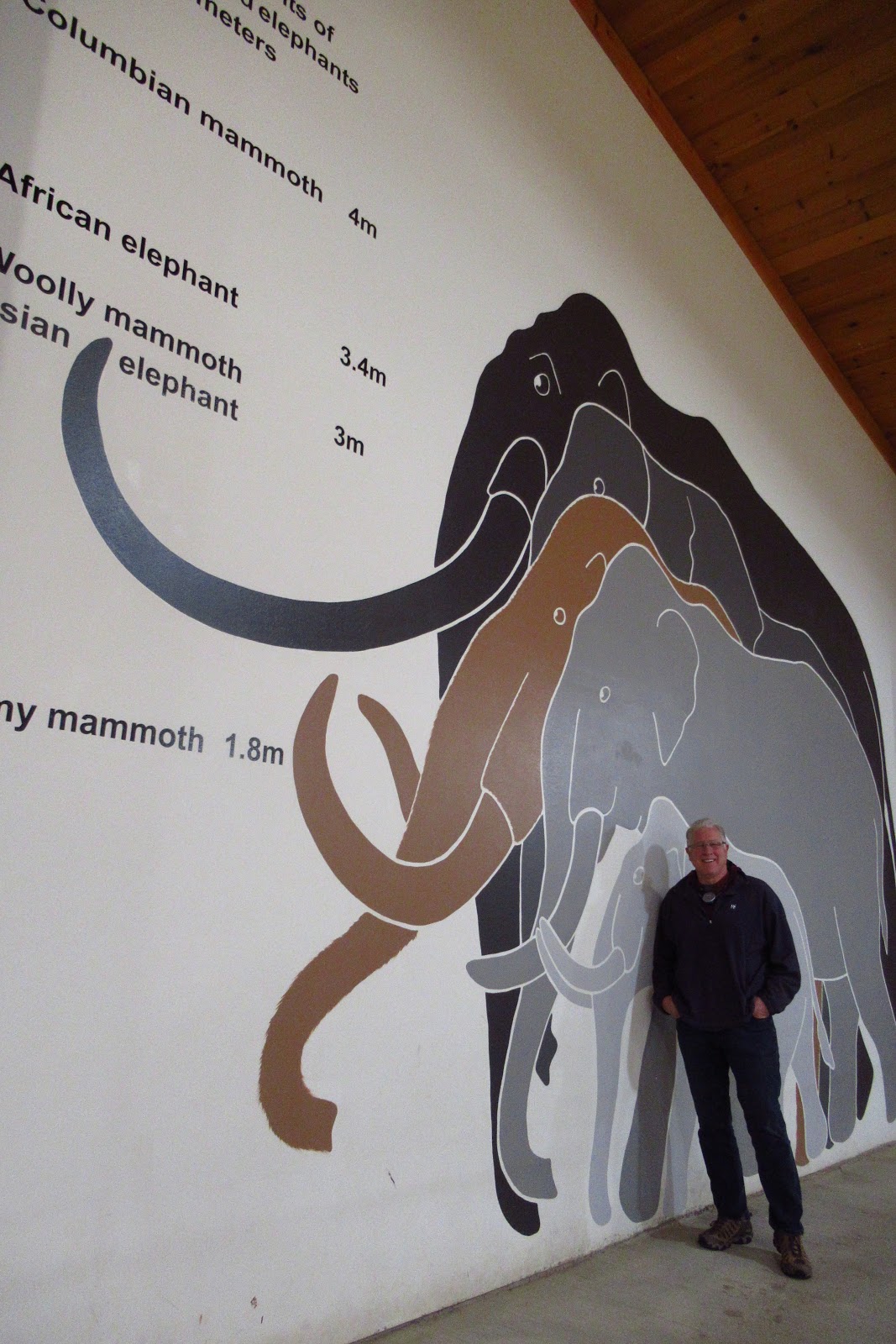
Excavators and scientists continue to dig down layer upon layer of mammoths piled on top of each other, and they even have summer programs where young people get to help participate.

The Mammoth Site was a cool, unexpected find here in Hot Springs, SD!

Moving on to Badlands National Park, we encountered some “surface of the moon” landscapes that were out of this
world!
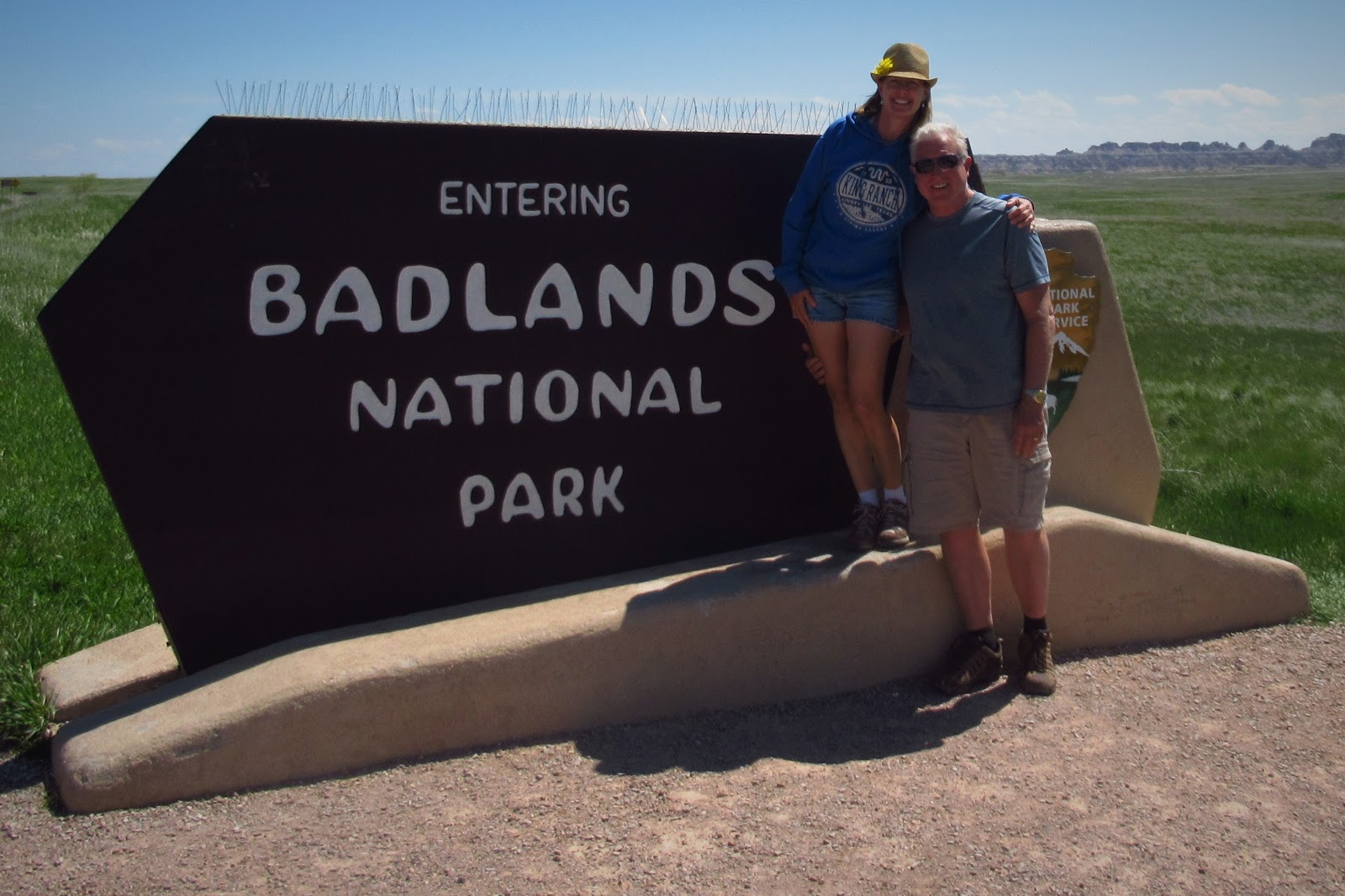
Even though it’s a terrible name promotion-wise, the Badlands name literally comes from the fact that these were VERY BAD LANDS for the Native Americans and settlers came through this area … harsh extremes, no shelter, no food sources, lack of farmability, and water that made you sick. SOUNDS GREAT, right??!
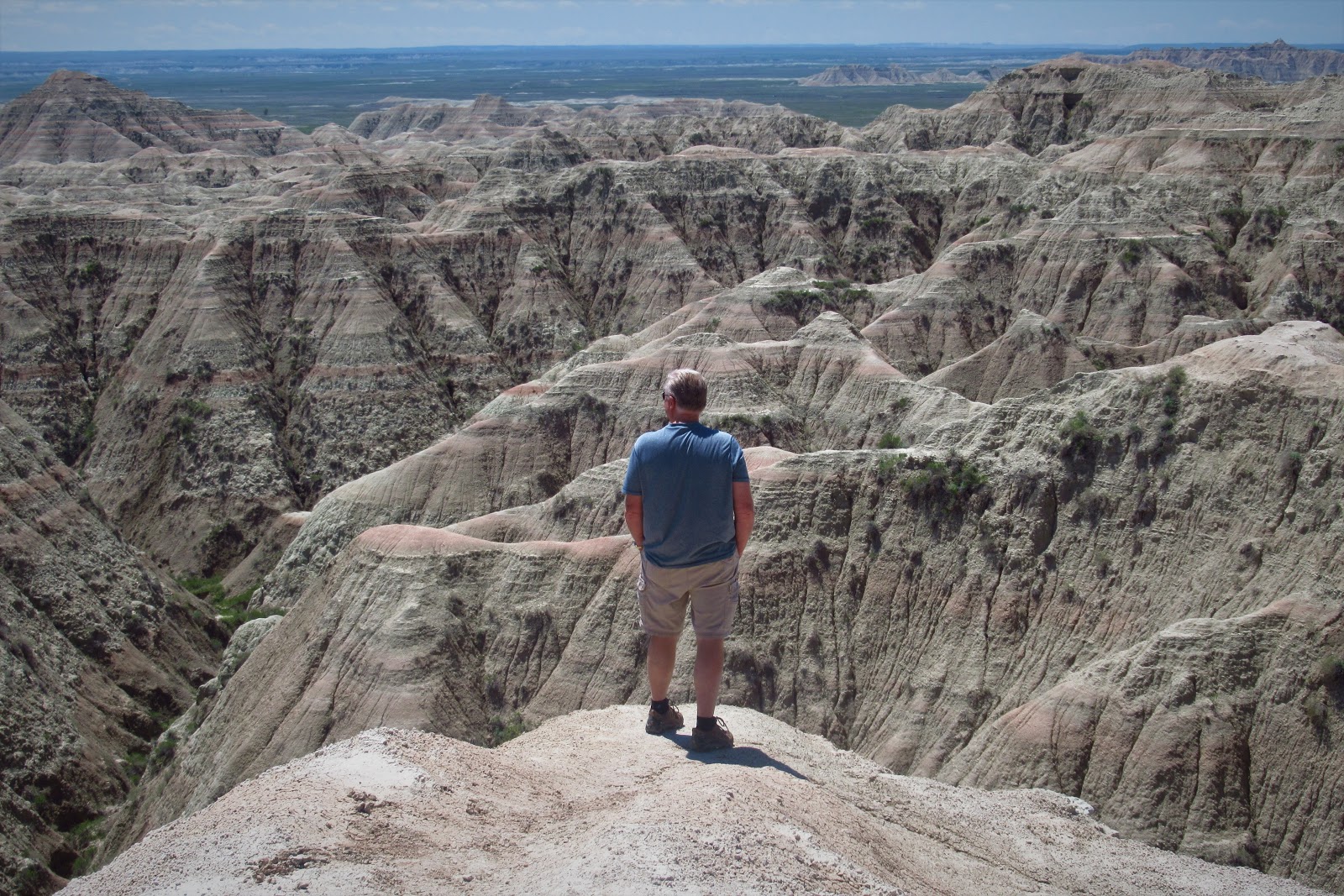
The rocks aren’t all gray … just 99% of them. But here the “Yellow Mounds” provide multi-chromatic beauty.
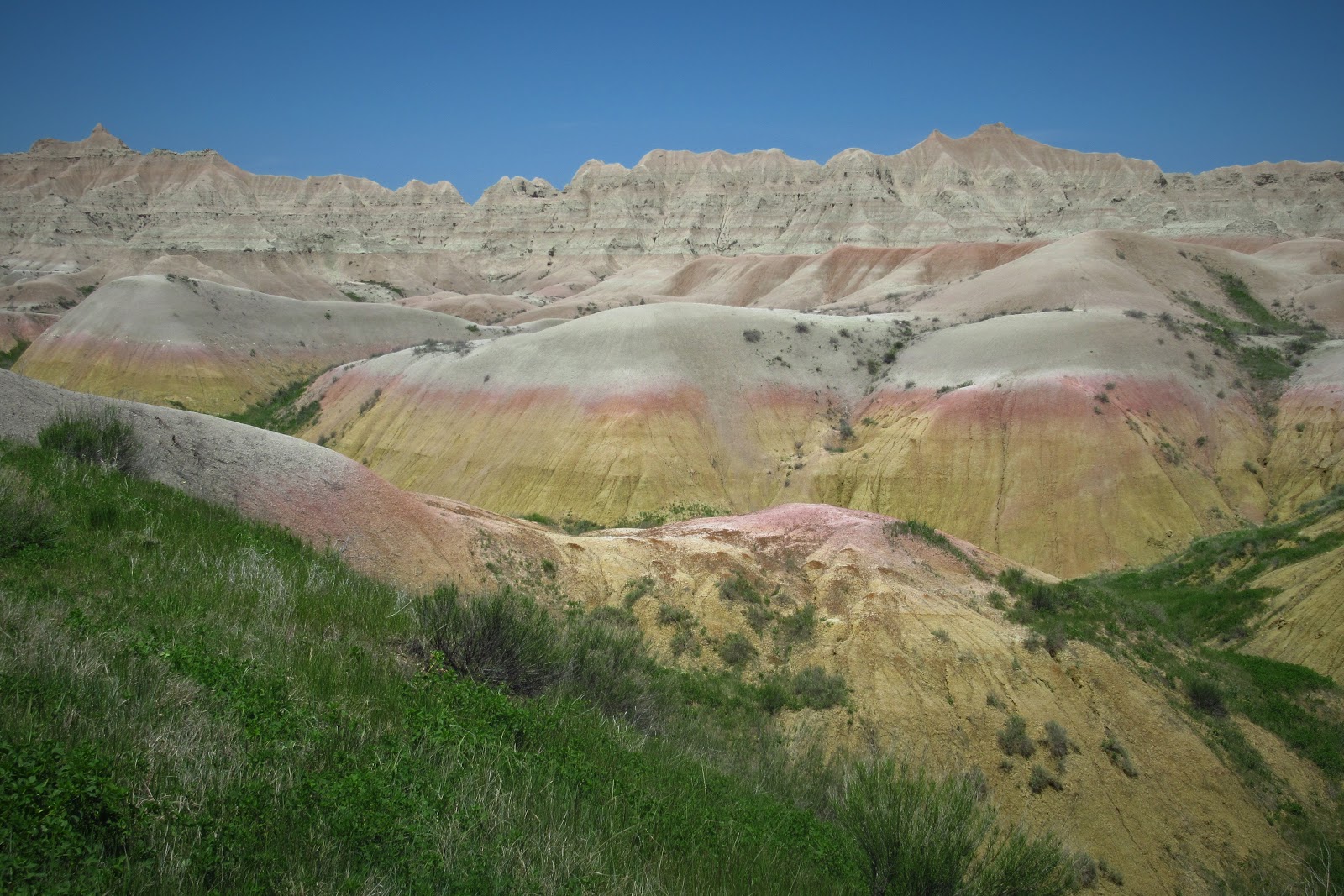
The recent wet spring has also nicely filled in the gray with patches of green and wildflowers.

The durability of these rocks means the National Parks Service will let you tromp all over them. There are few hiking trails, but who needs trails, just go wherever you want!
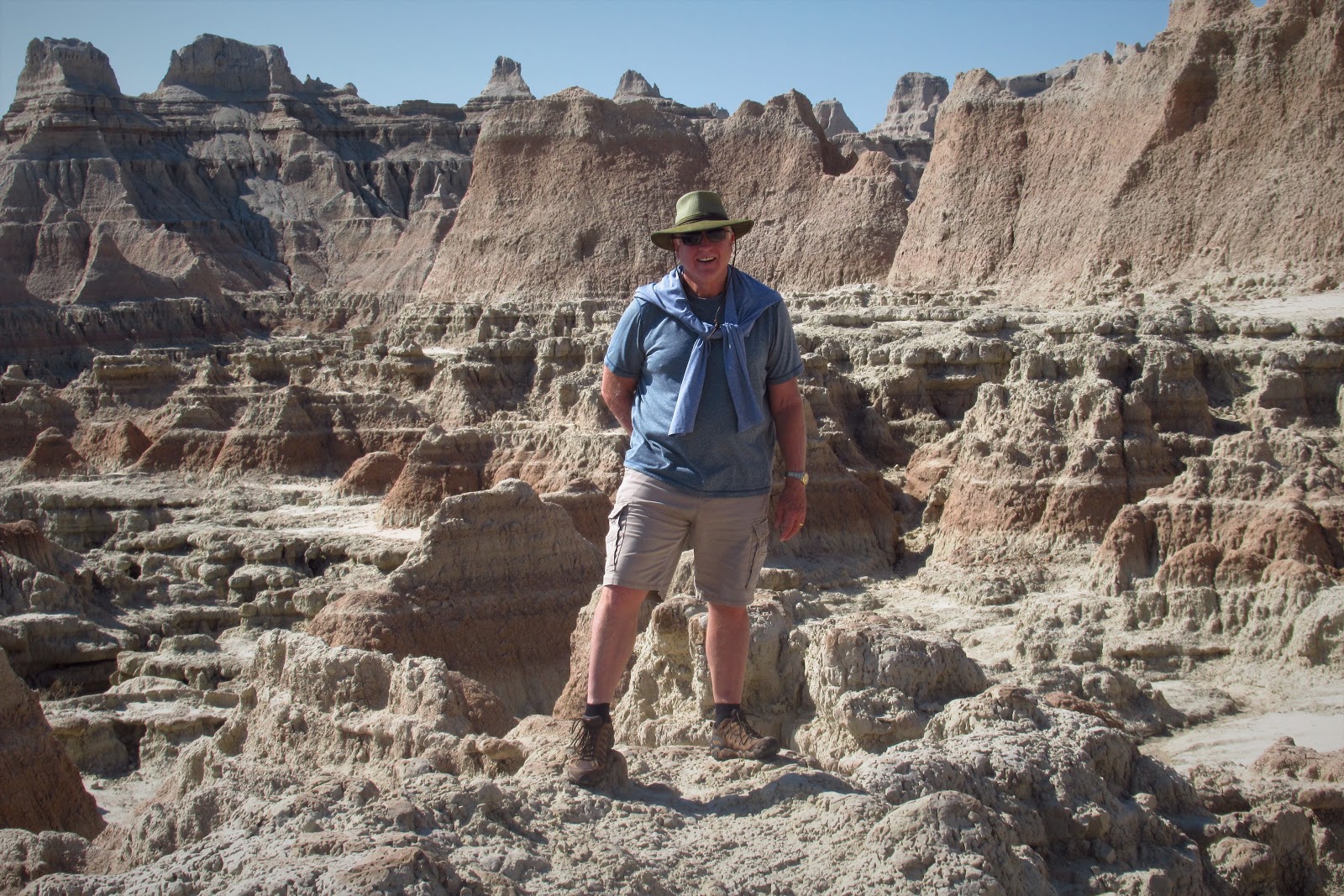
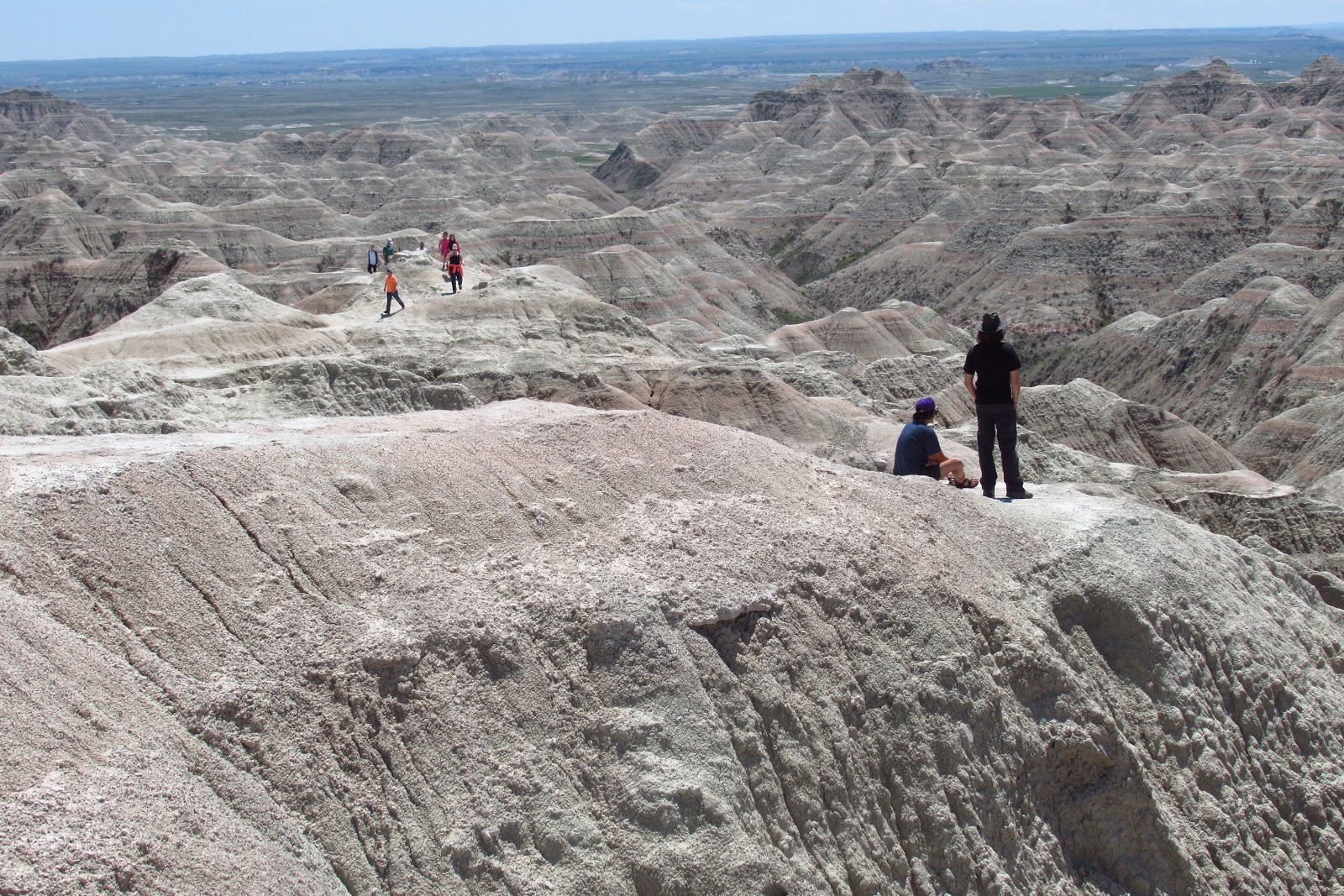
The “Notch Trail” is fairly short, fairly easy, and on this Memorial Day holiday weekend with bright sunny skies, overrun with people. Doh!
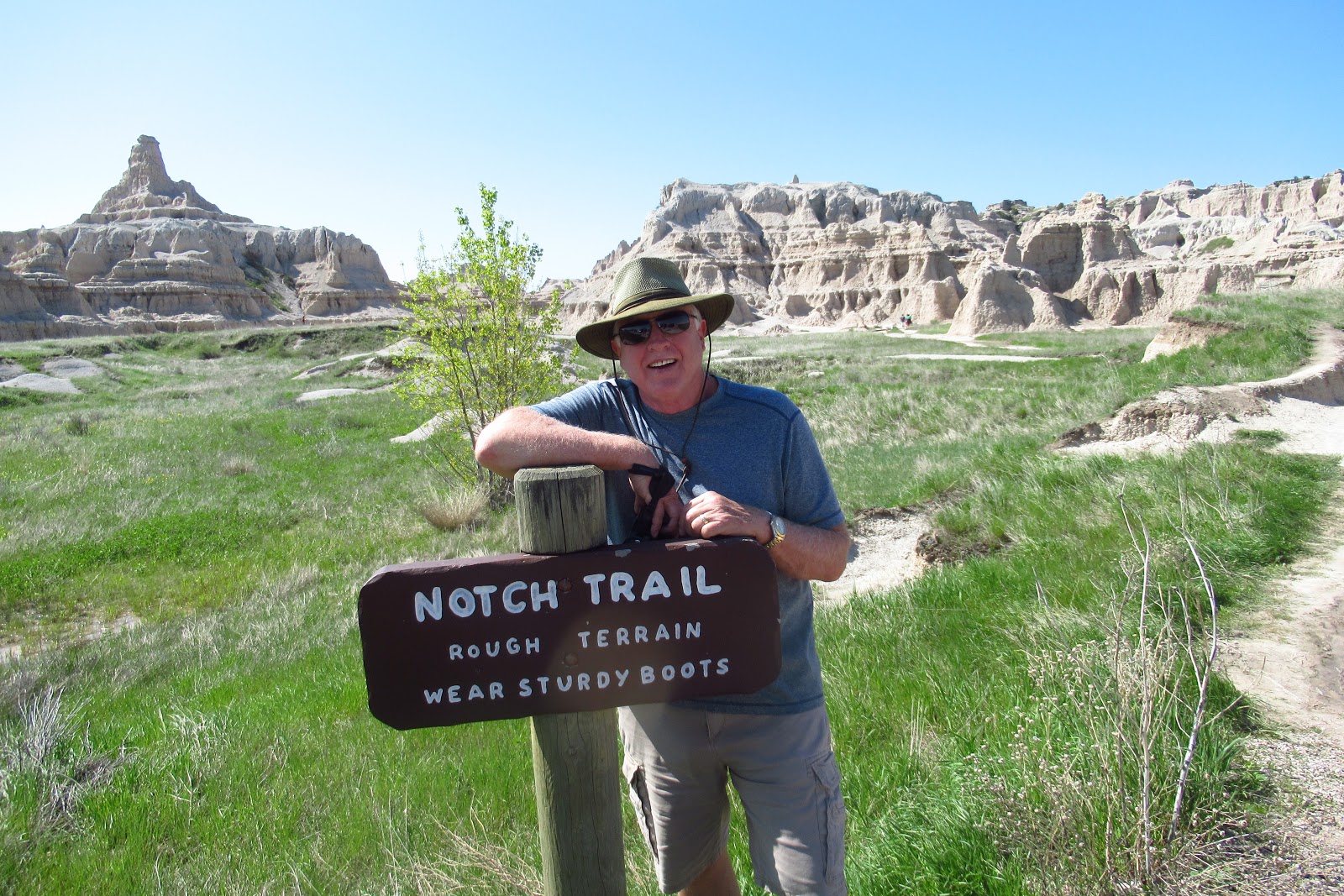
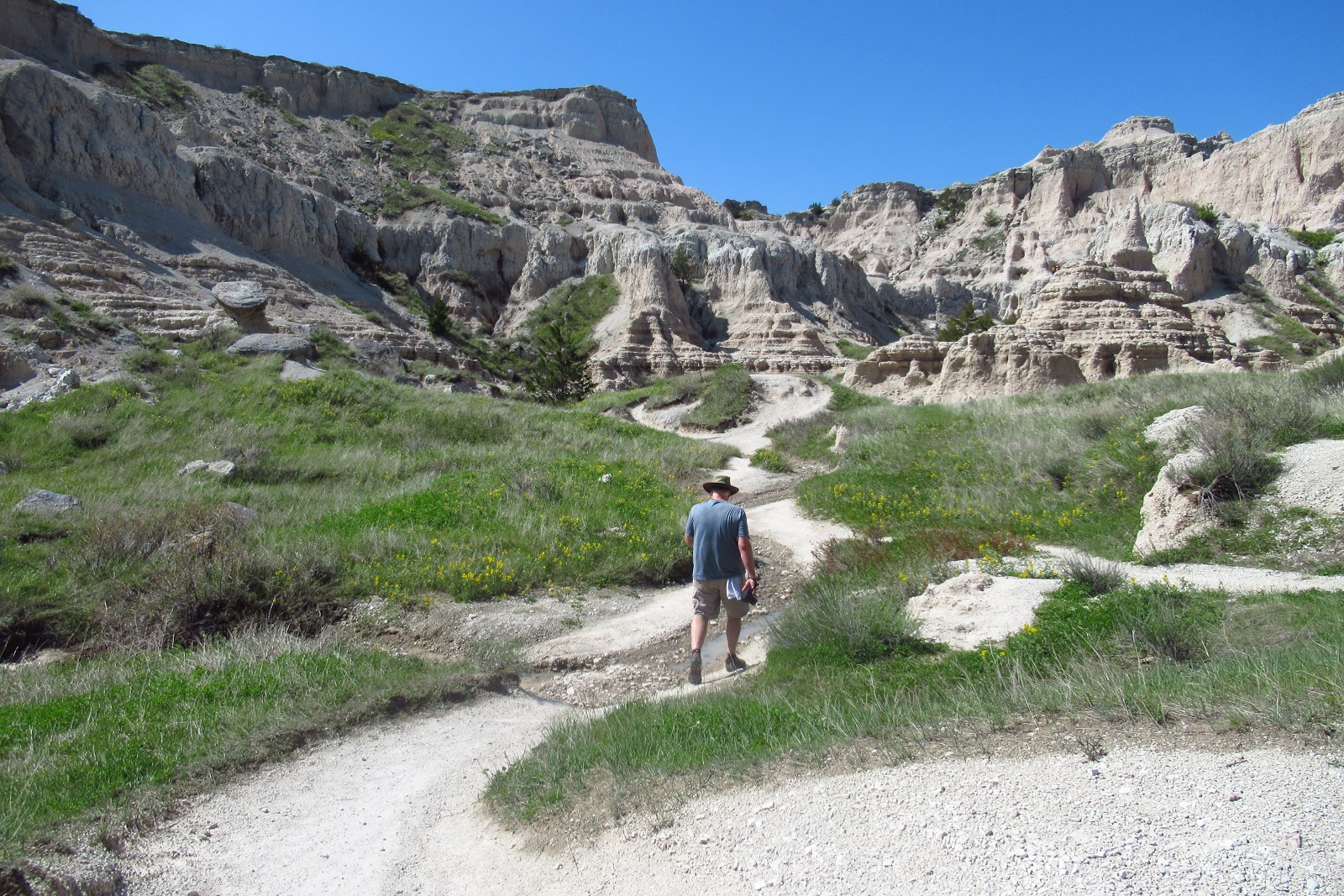
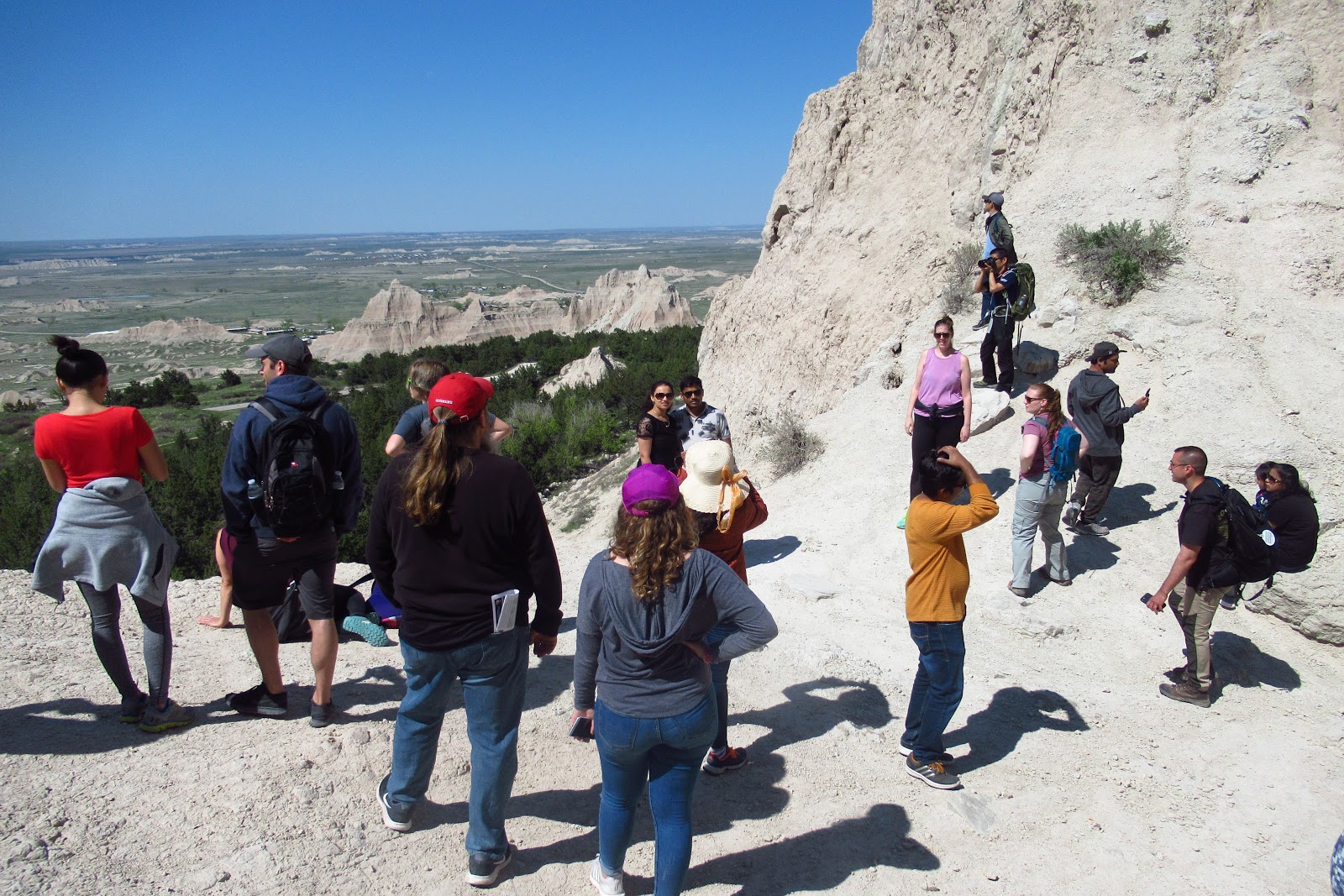 |
| Crowds at the top … what is this, the Grand Canyon or something? |
On the plus side, this trail has a fun 50-rung wooden ladder right in the middle of it. See the little human climbing it in the middle of this photo?
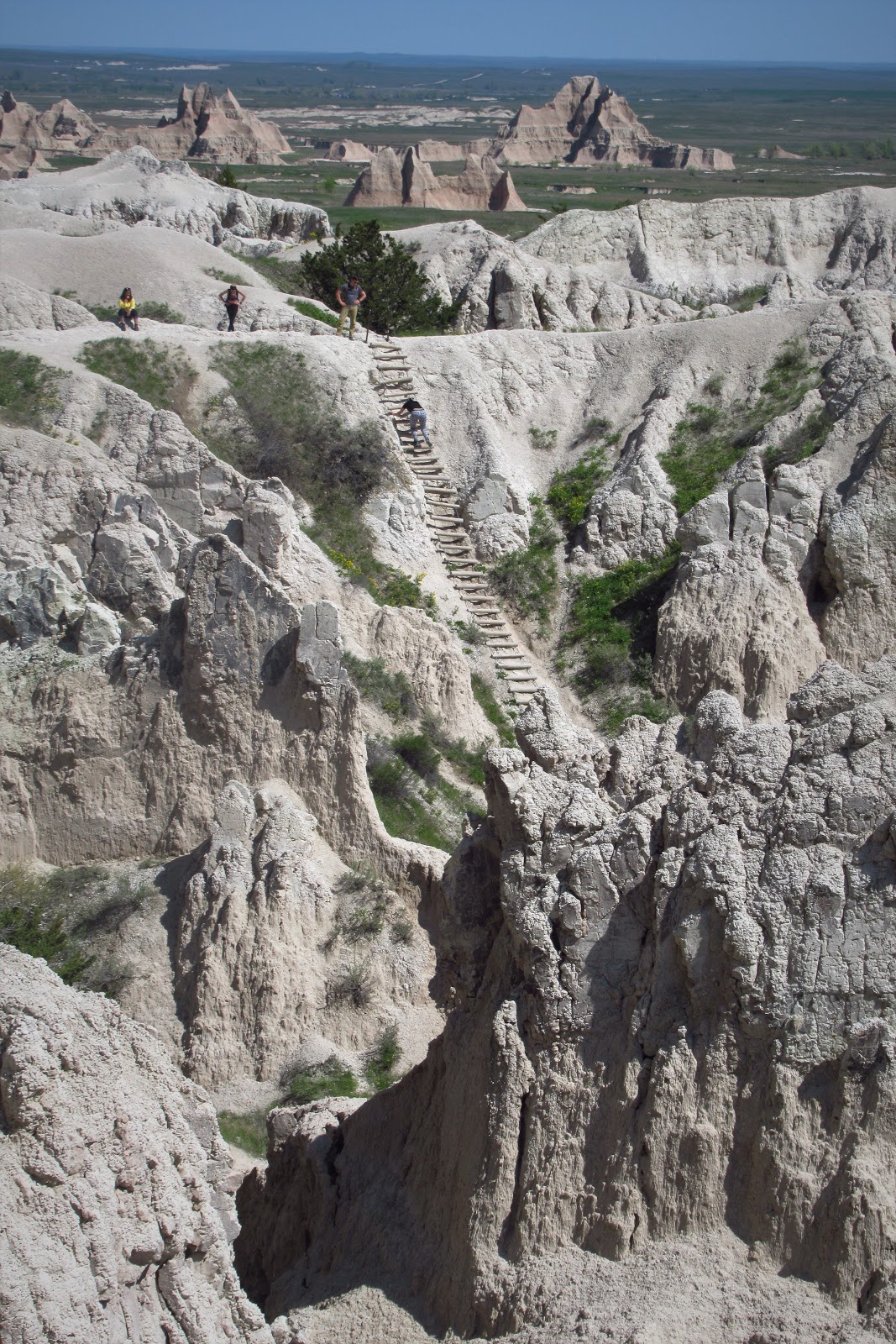

Also in the Badlands, more wildlife! Bison, anyone? This guy needs a bath! We started counting all the places we’ve seen bison since we started RV’ing … quite a few, actually! Here are links to our blog stories of some of those places, if you count yourself amongst the bison lovers of the world ….
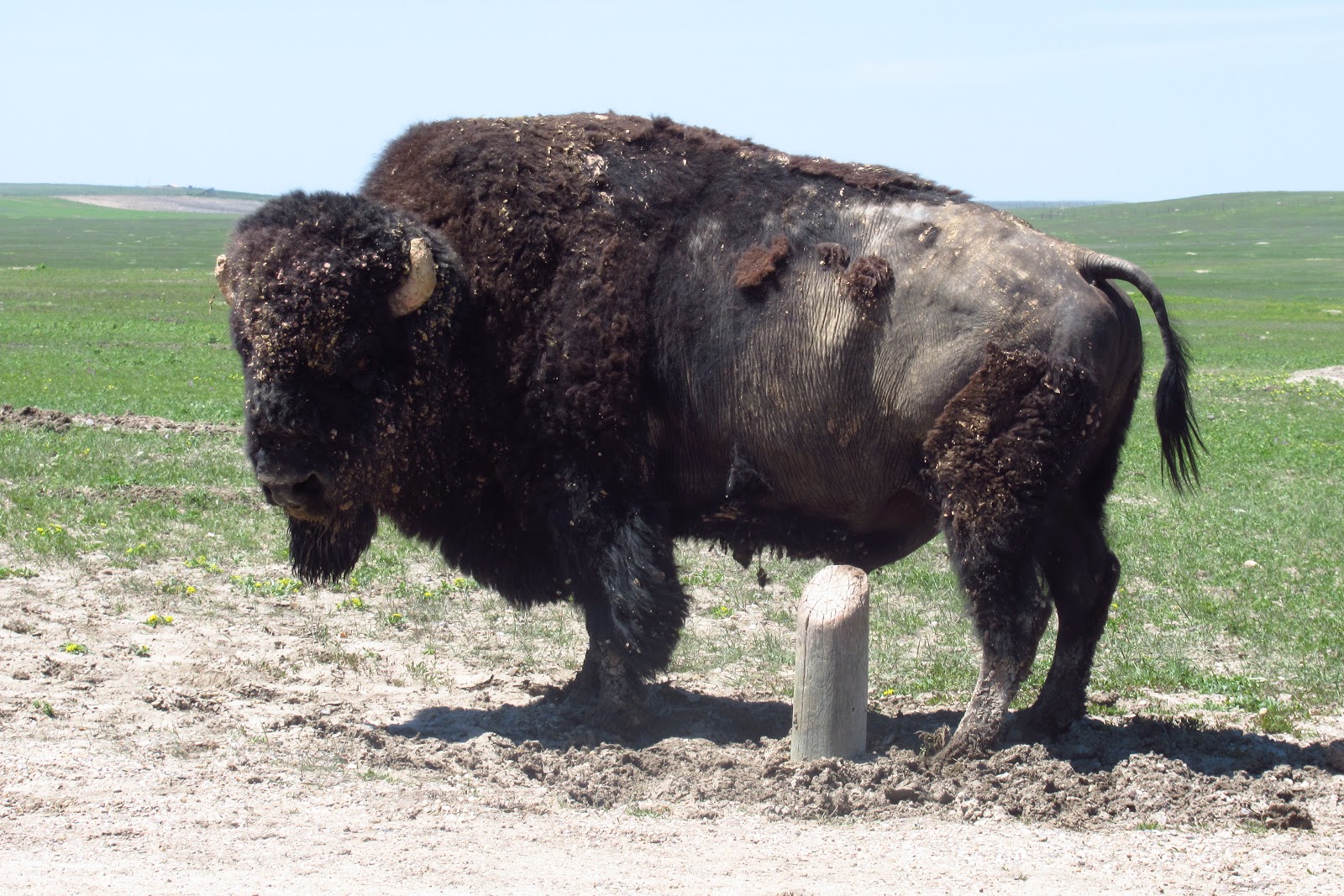
Also in attendance at Badlands NP, the hilarious prairie dogs, popping in and out of their holes and chattering away, so plentiful that they have their own town, presumably complete with a community recreation center and HOA restrictions.
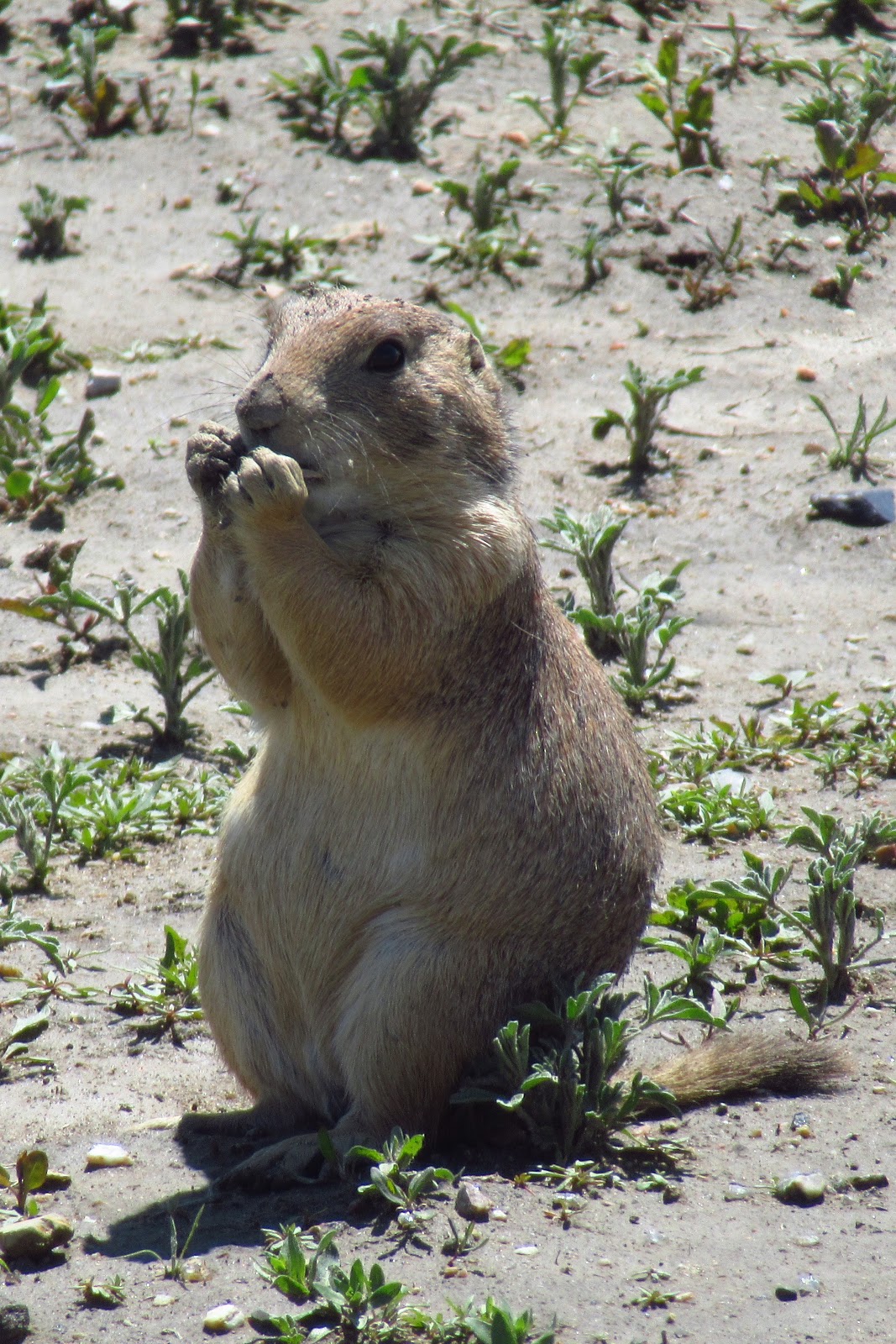
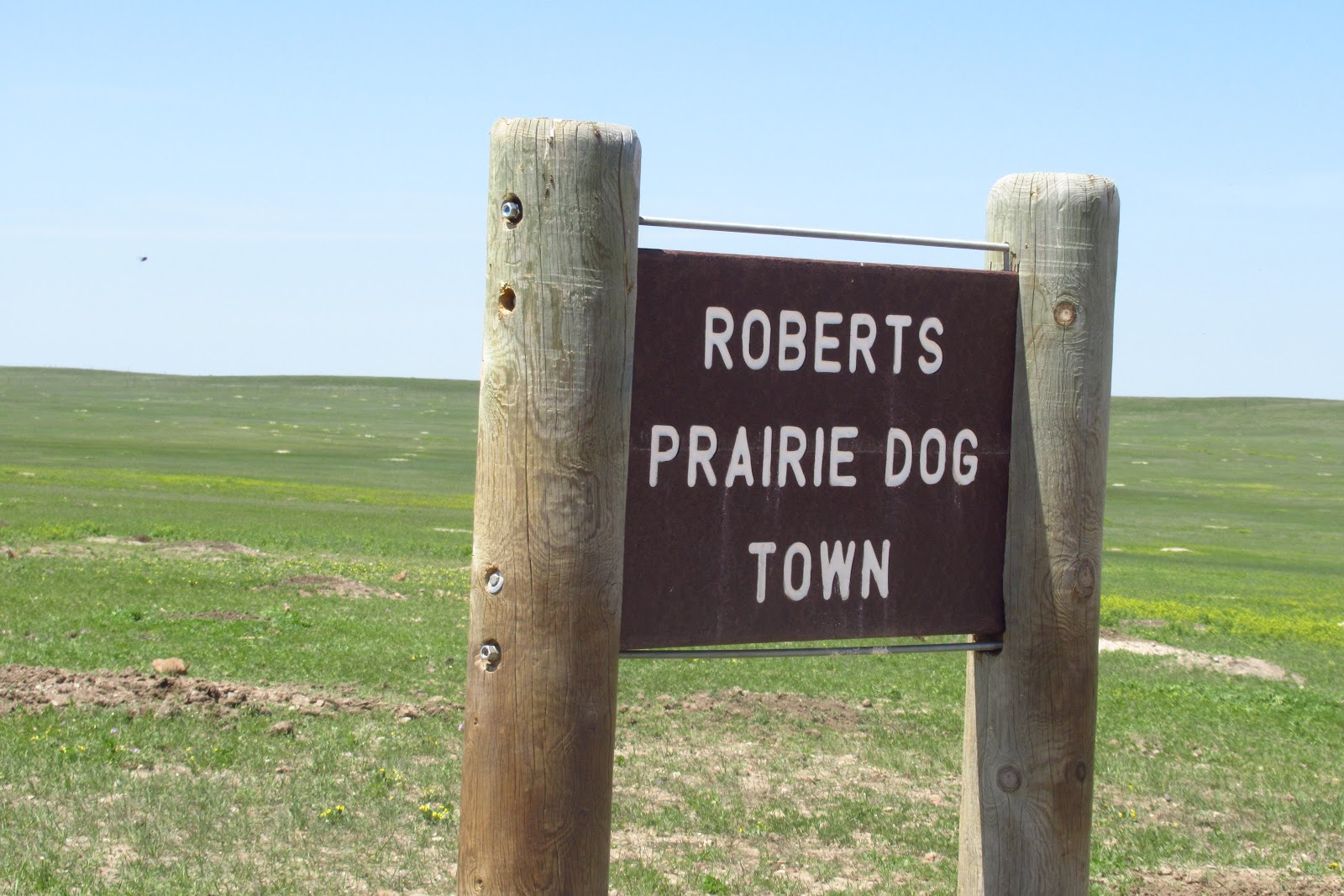
Some prairie dogs are dangerous! Beware the Giant North American Yellow-Bellied Prairie Dog!
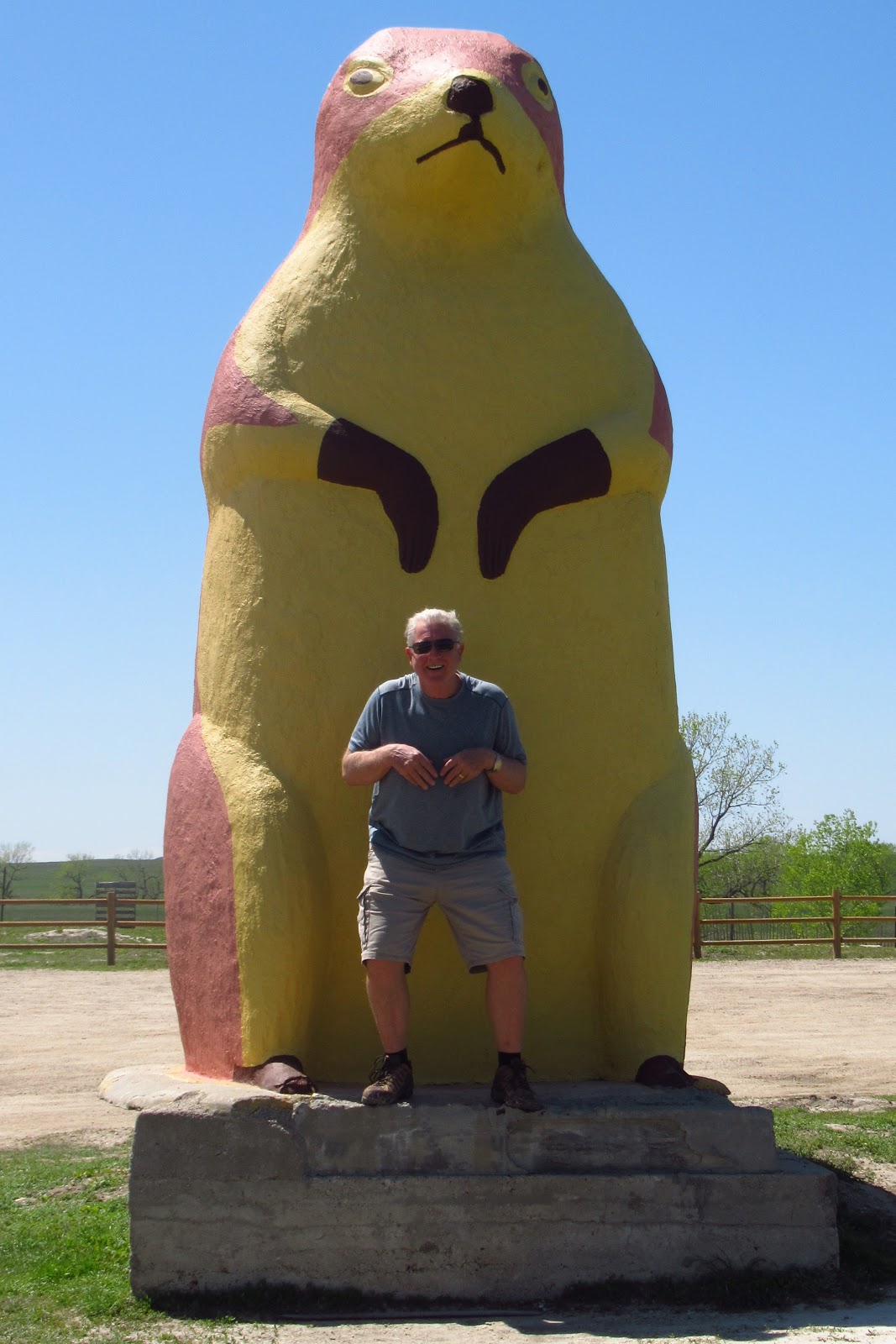
I snapped a shot of a Western Meadowlark bird from the RV door, sitting on top of our picnic shelter. Before you go thinking I’m a serious birder, or have an encyclopedic knowledge of wildlife, we had to track down a park ranger to ask what kind of bird he was. But isn’t he a beauty? Also VERY loud with a distinctive song, a self-appointed Badlands alarm clock at 4:30 AM.
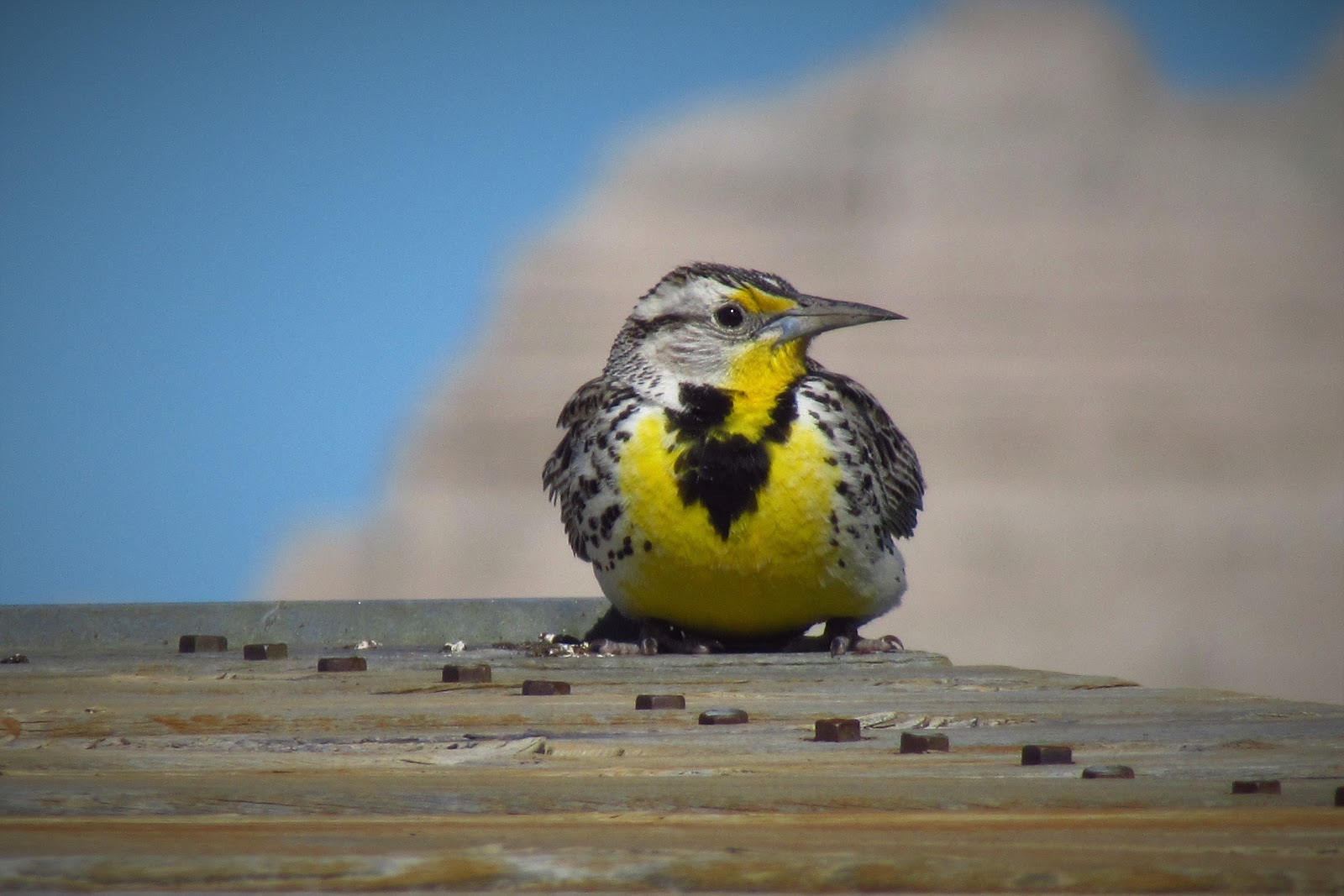
Enroute from Wind Cave to Badlands, you won’t encounter much, but you certainly can’t help but spot the hundreds (thousands?) of roadside signs advertising Wall Drug.
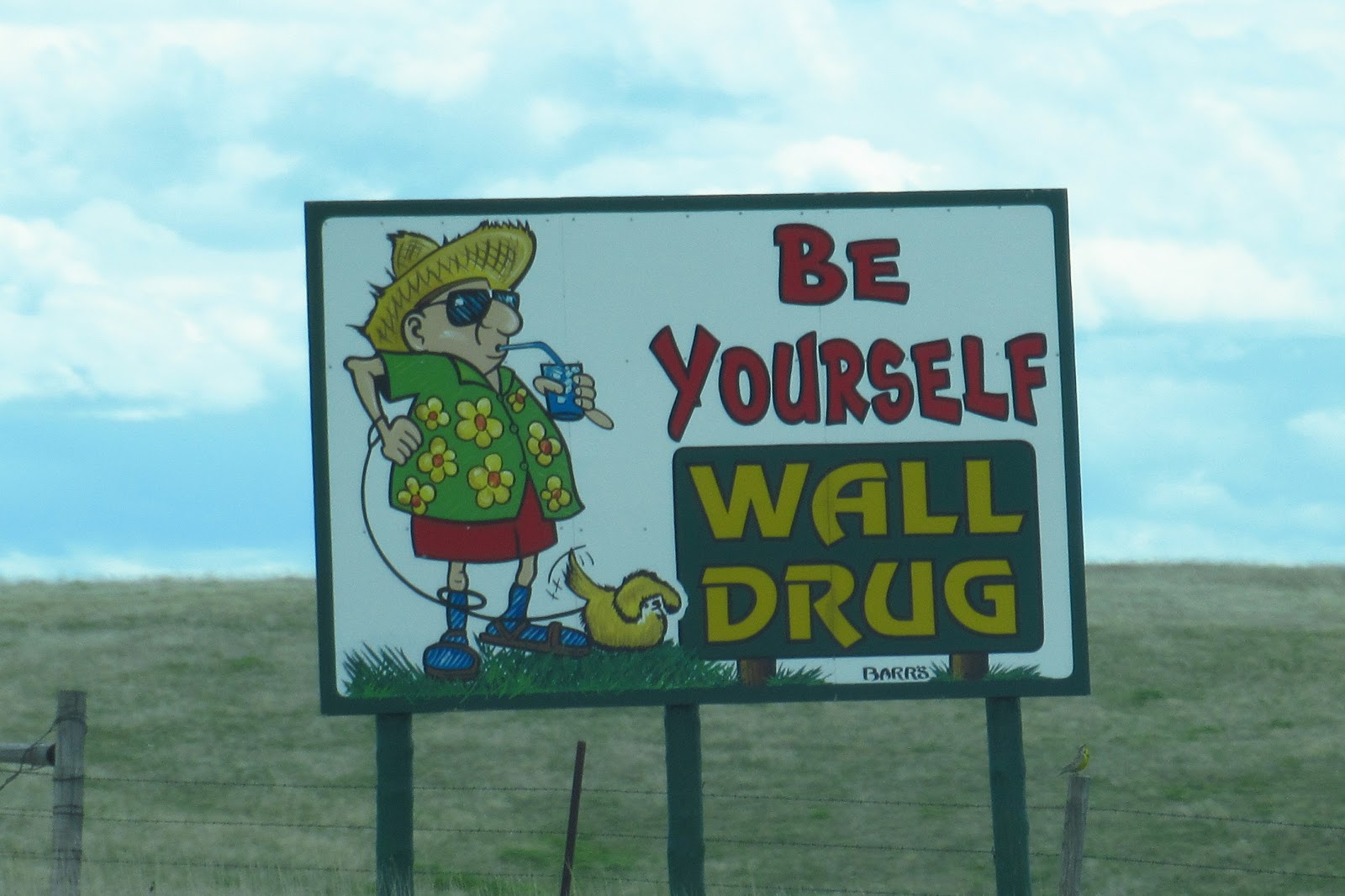

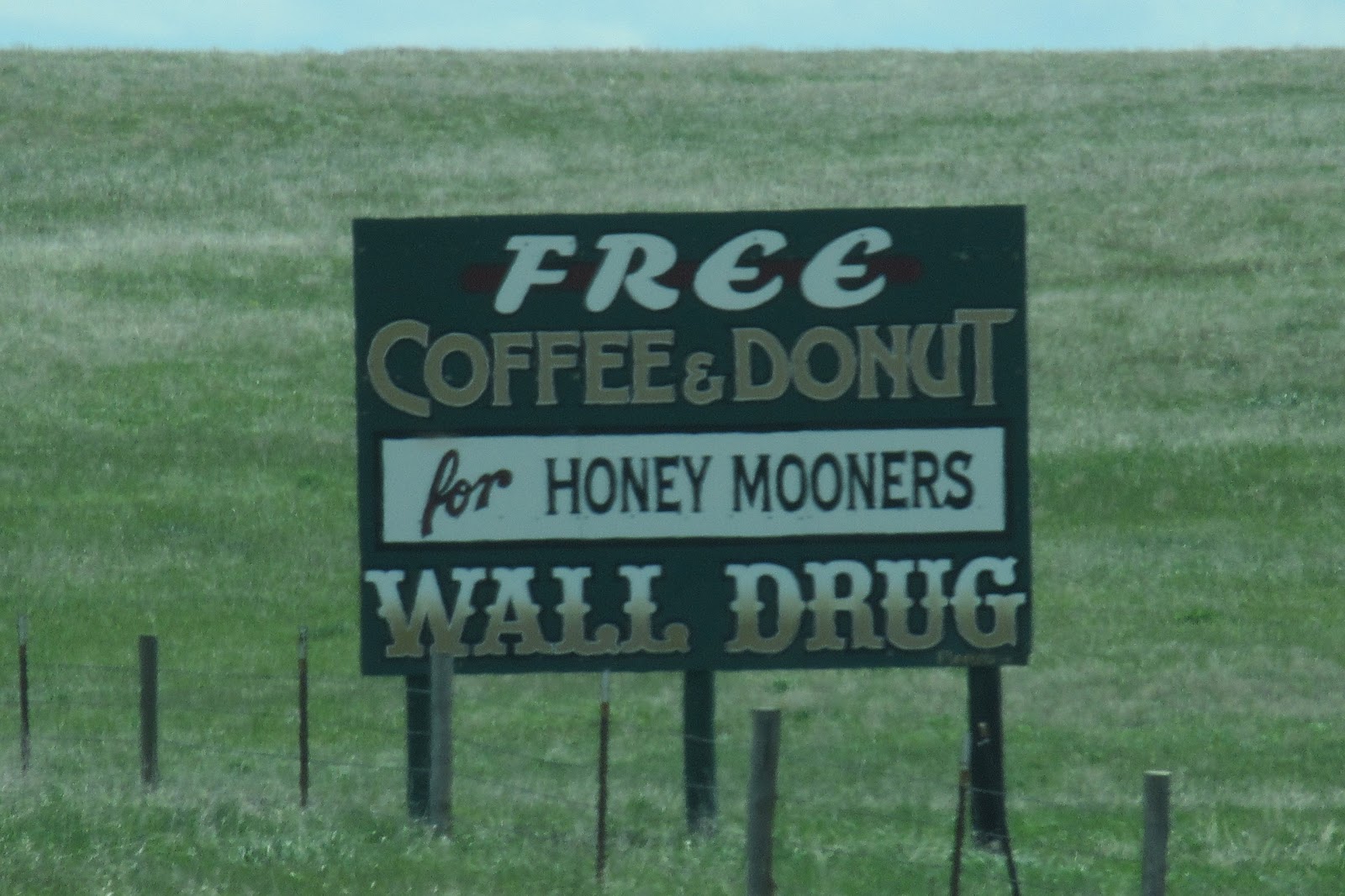

Wall Drug was a small pharmacy in the middle of nowhere Wall, South Dakota, a tiny town of a few hundred people. Adding to the misery, it was the start of the Great Depression. The owners needed a way to bring in customers, and soon! What to do??! They started offering free glasses of ice water.
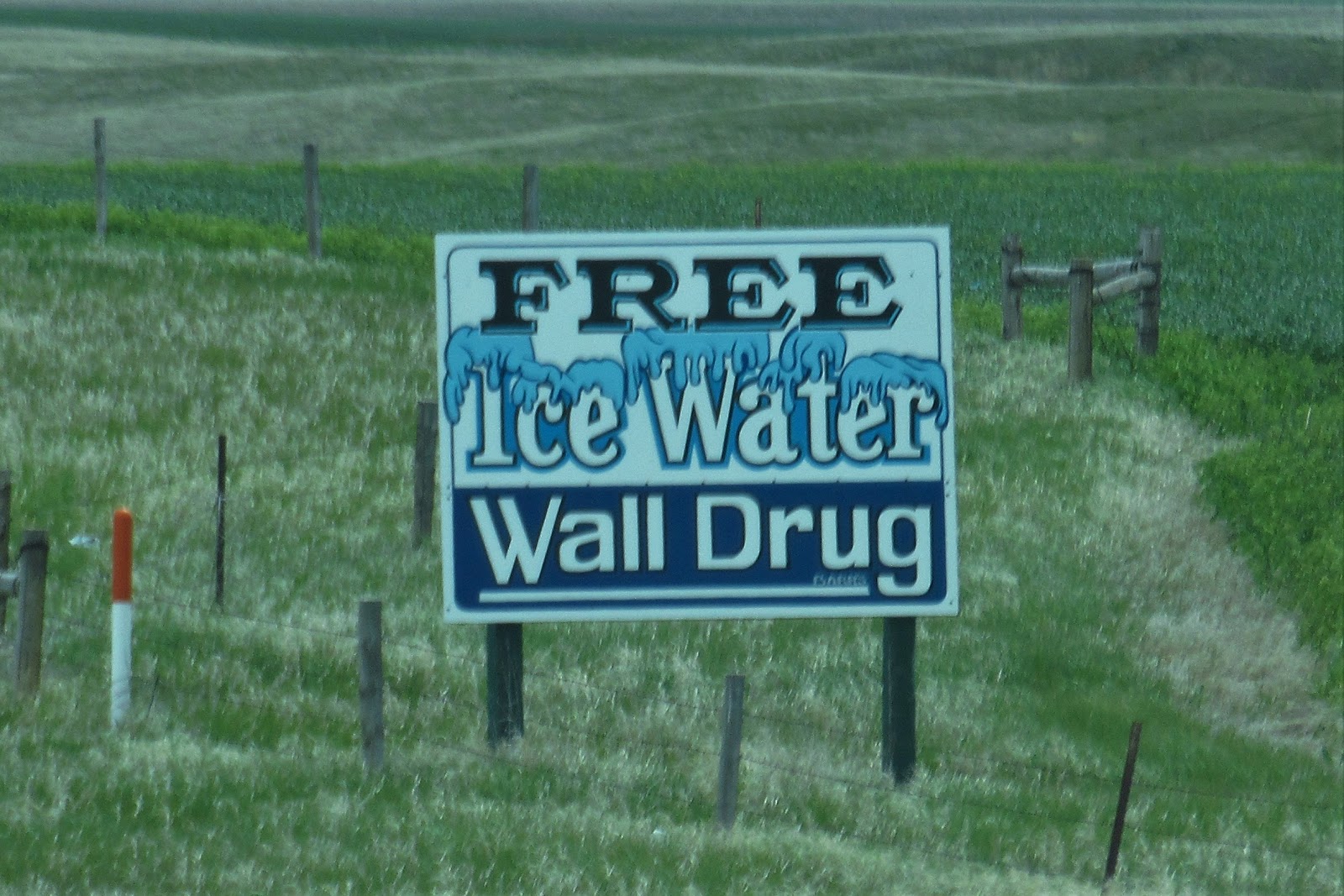
Shockingly, this worked, since who doesn’t love free ice water. Now, Wall Drug is a thriving oasis to over 2,000,000 visitors per year (up to 20,000 per day), and covers multiple city blocks. And, still the free ice water.
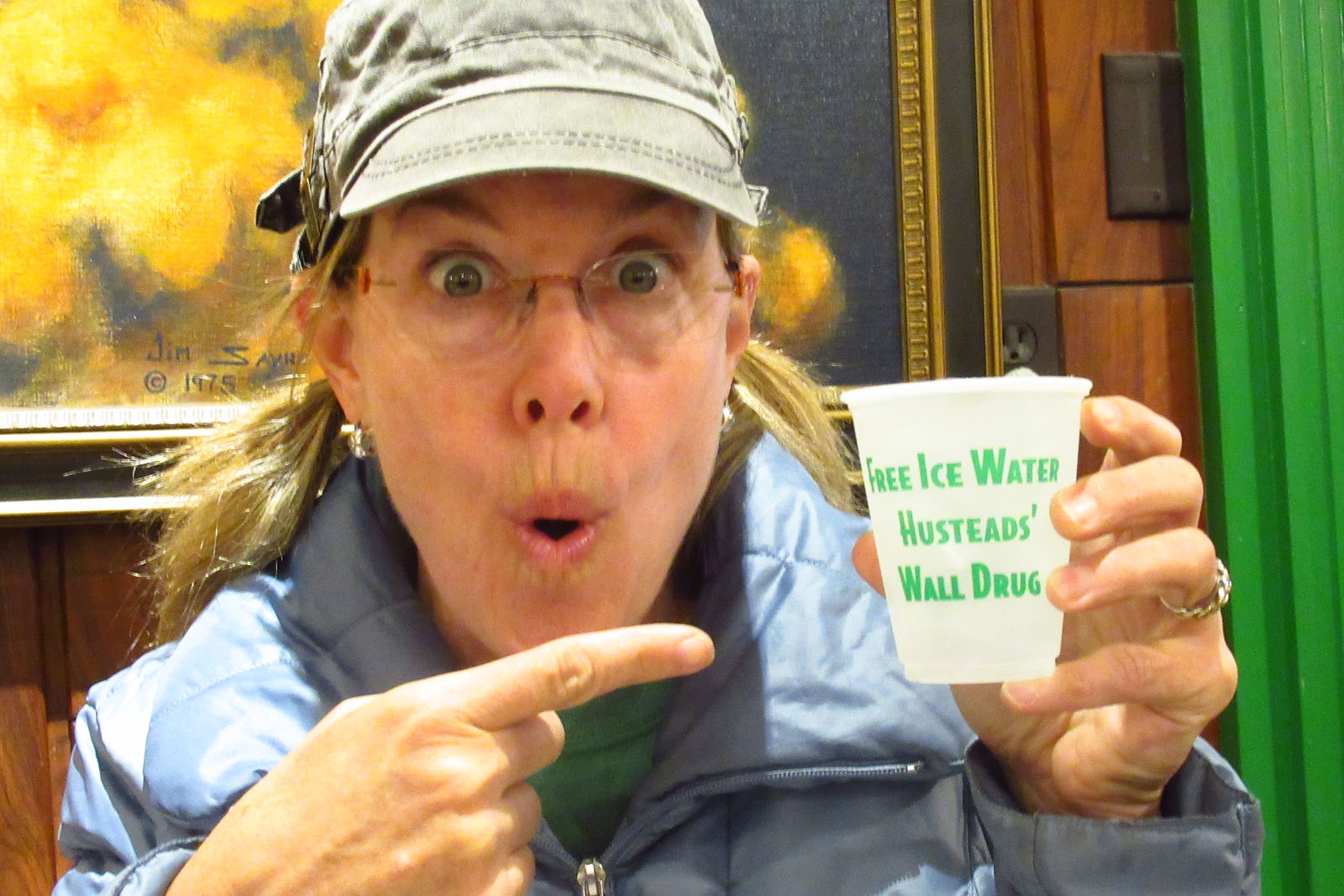
It’s kitschy on steroids, touristy and fun, and where else can you ride a giant jackalope? Just sayin’.
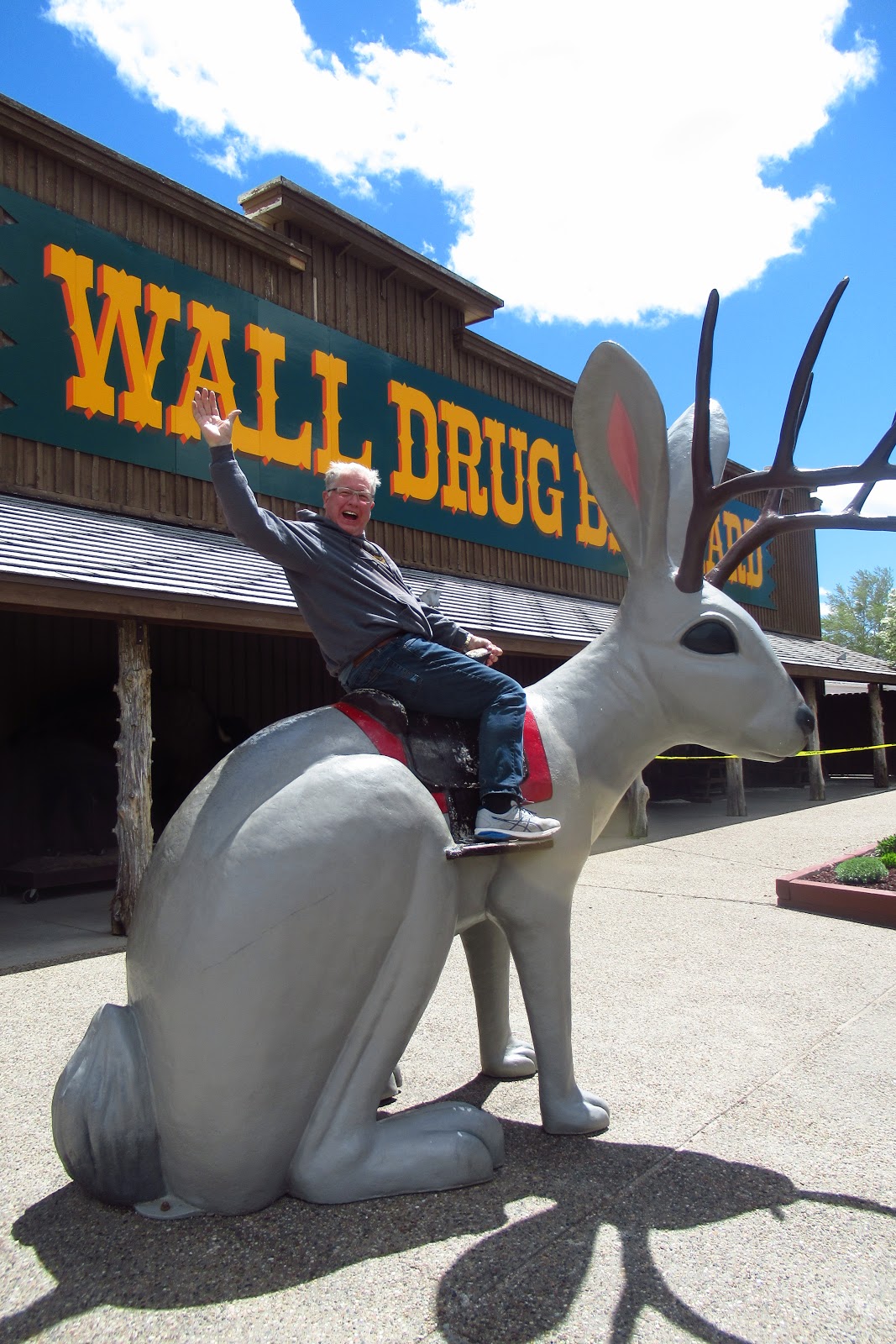
An exact replica of what Mount Rushmore would look like if Bill Clinton were added.
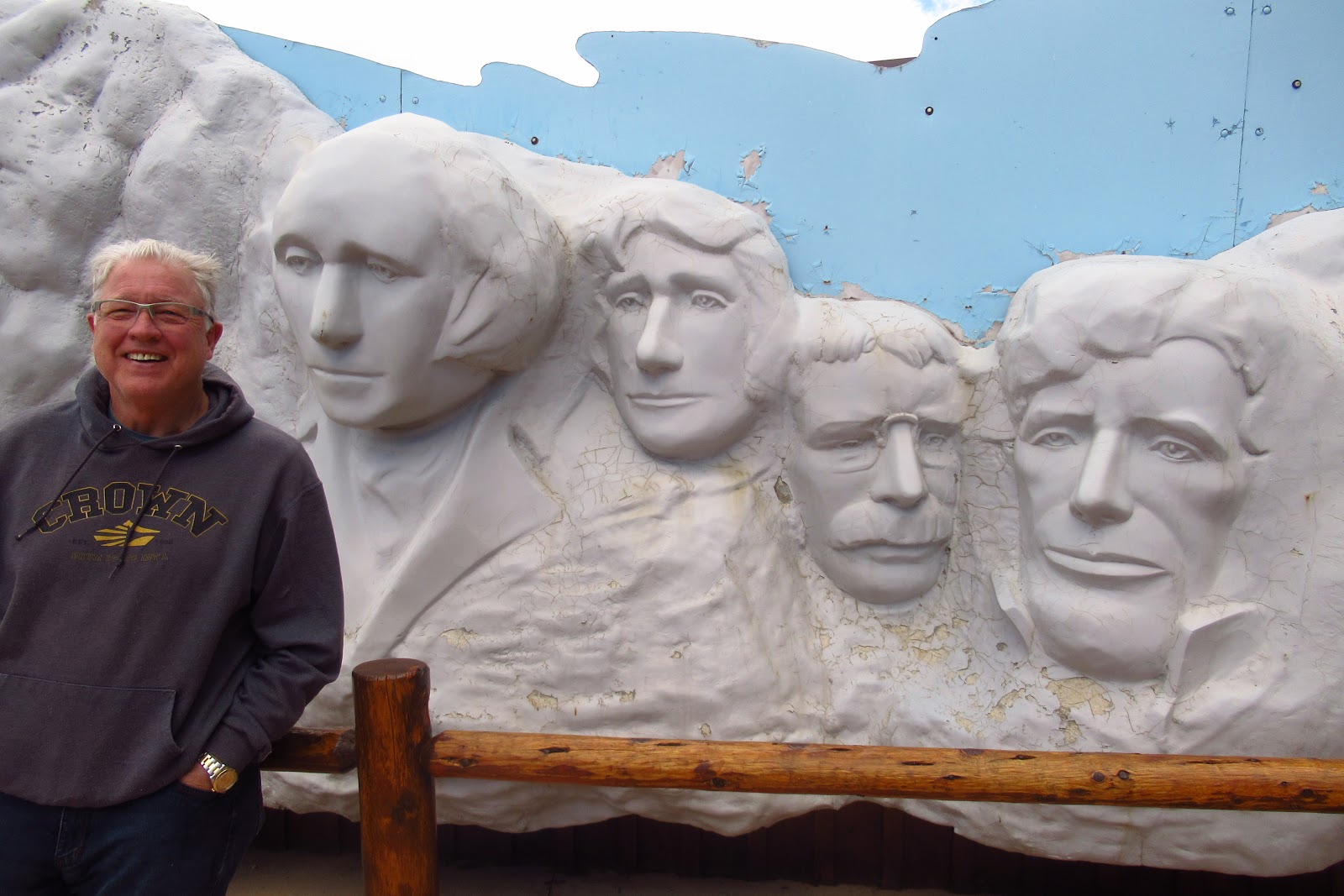
The 76,000 square feet inside of Wall Drug contains a restaurant and multiple “shops” (really just rooms) selling everything you can imagine, from cowboy boots to candles to camping gear to gemstones to candy and everything else in between. It’s set up like an indoor Main Street.

They even have a “Travelers’ Chapel” inside.
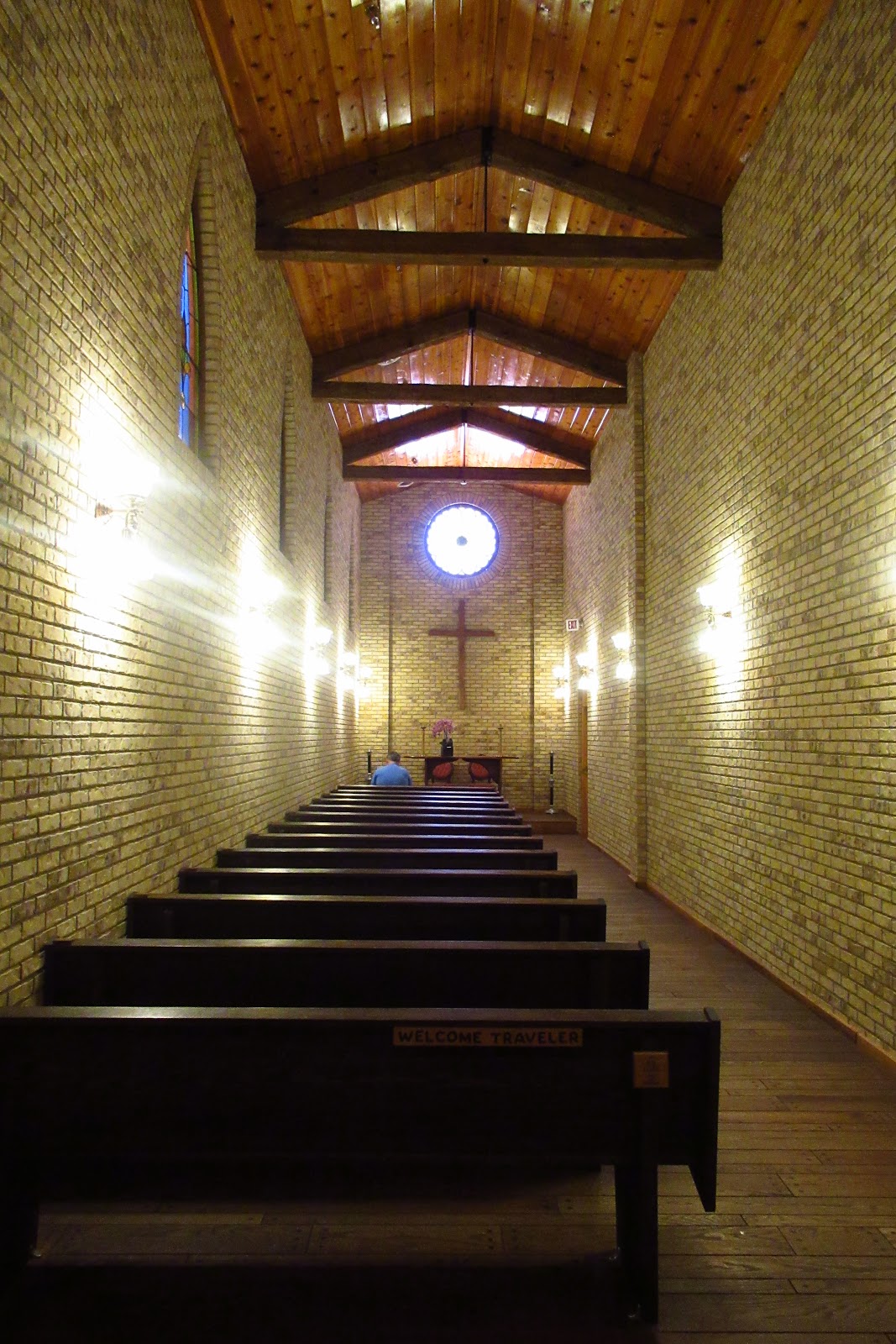
Perhaps this guy should visit the chapel to atone for his sins, namely consorting with the loose women hanging around Wall Drug.

Our final South Dakota stop was in Mitchell to view the “World’s Only Corn Palace.” That is all adorned with ears of corn, y’all!

The building is covered in unique murals made out of roughly 325,000 ears of corn, in 12 different color varieties.

The corn cobs are sawed in half lengthwise and nailed to the building in themes and patterns created by that year’s artist.
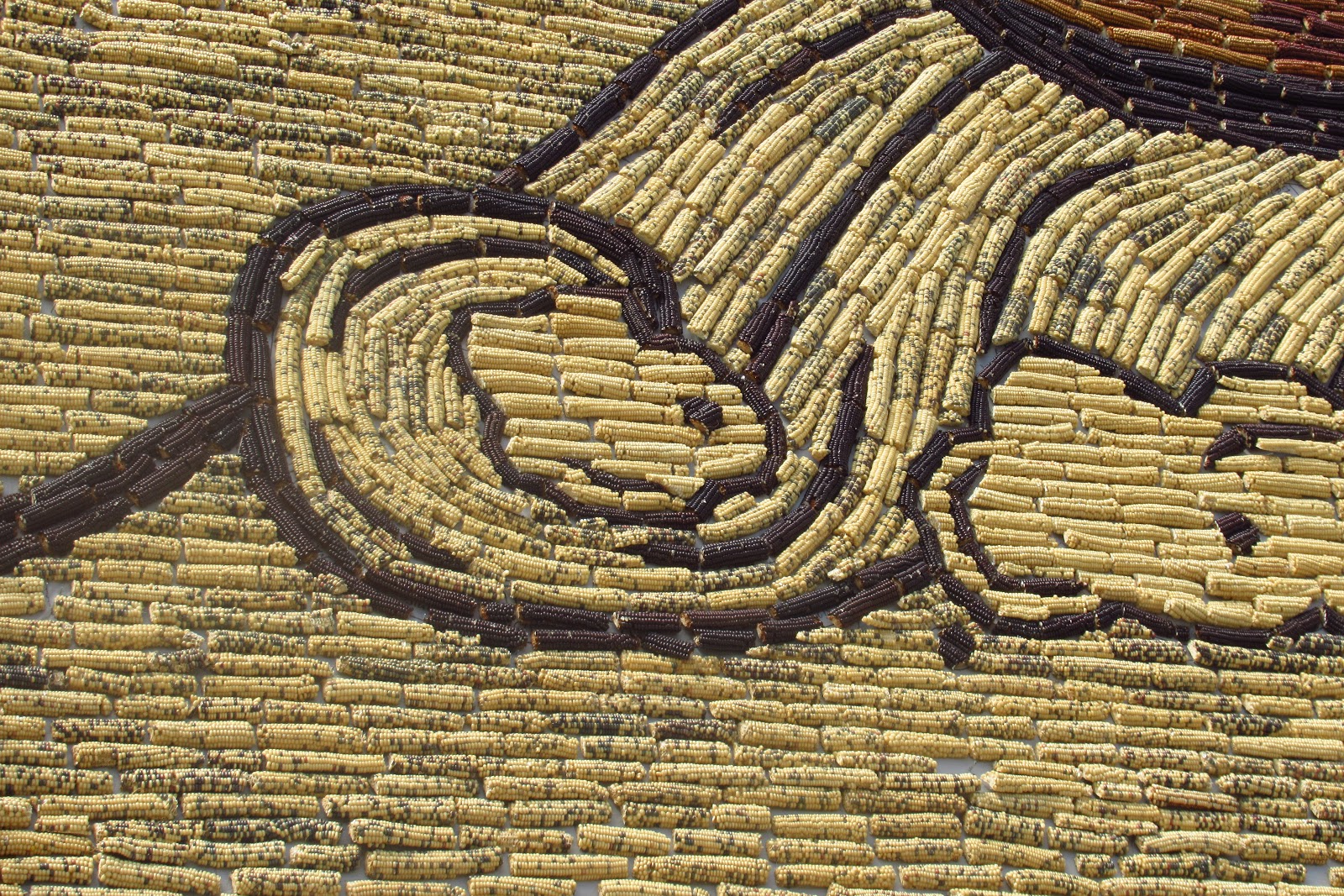
3,000 bushels of rye, oat heads and sour dock are tied in bundles and added as embellishment, but the corn is the real star of the show.
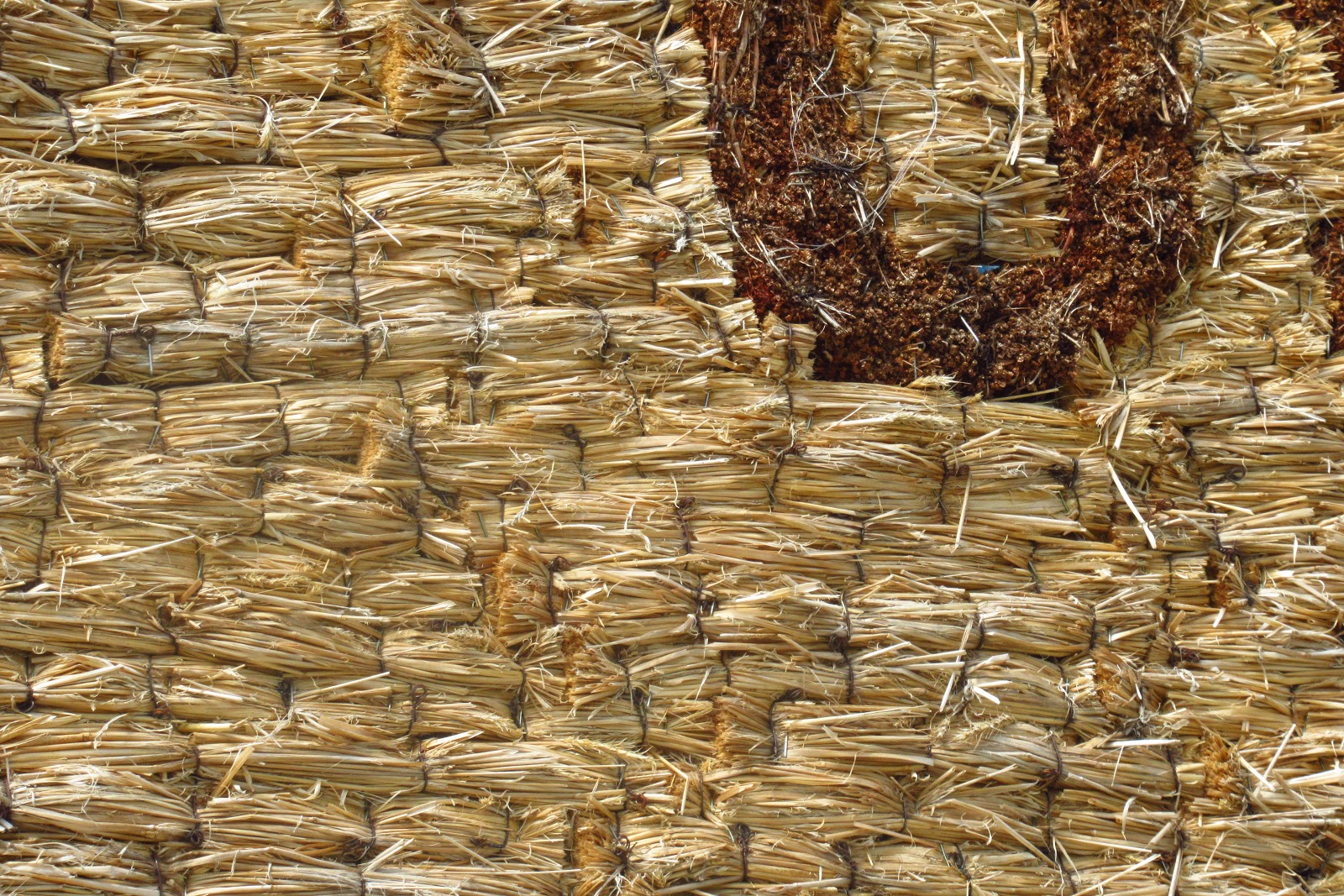
It was built in 1892 to prove the fertility of Mitchell soil and draw immigrant farmers to settle down here. This year’s theme is Salute to Military, and they were unwilling to confirm next year’s theme, which they will start constructing in the next month.

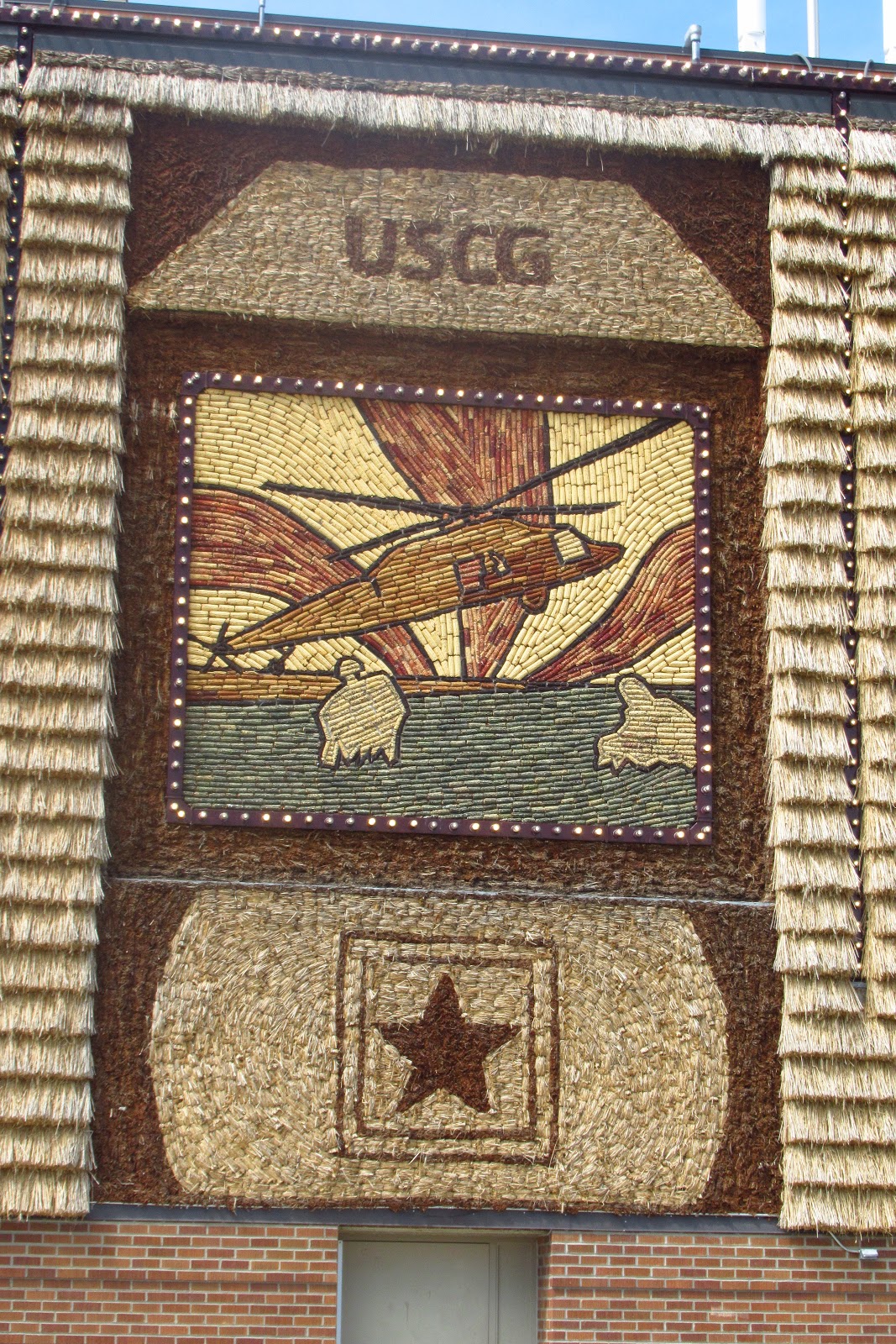
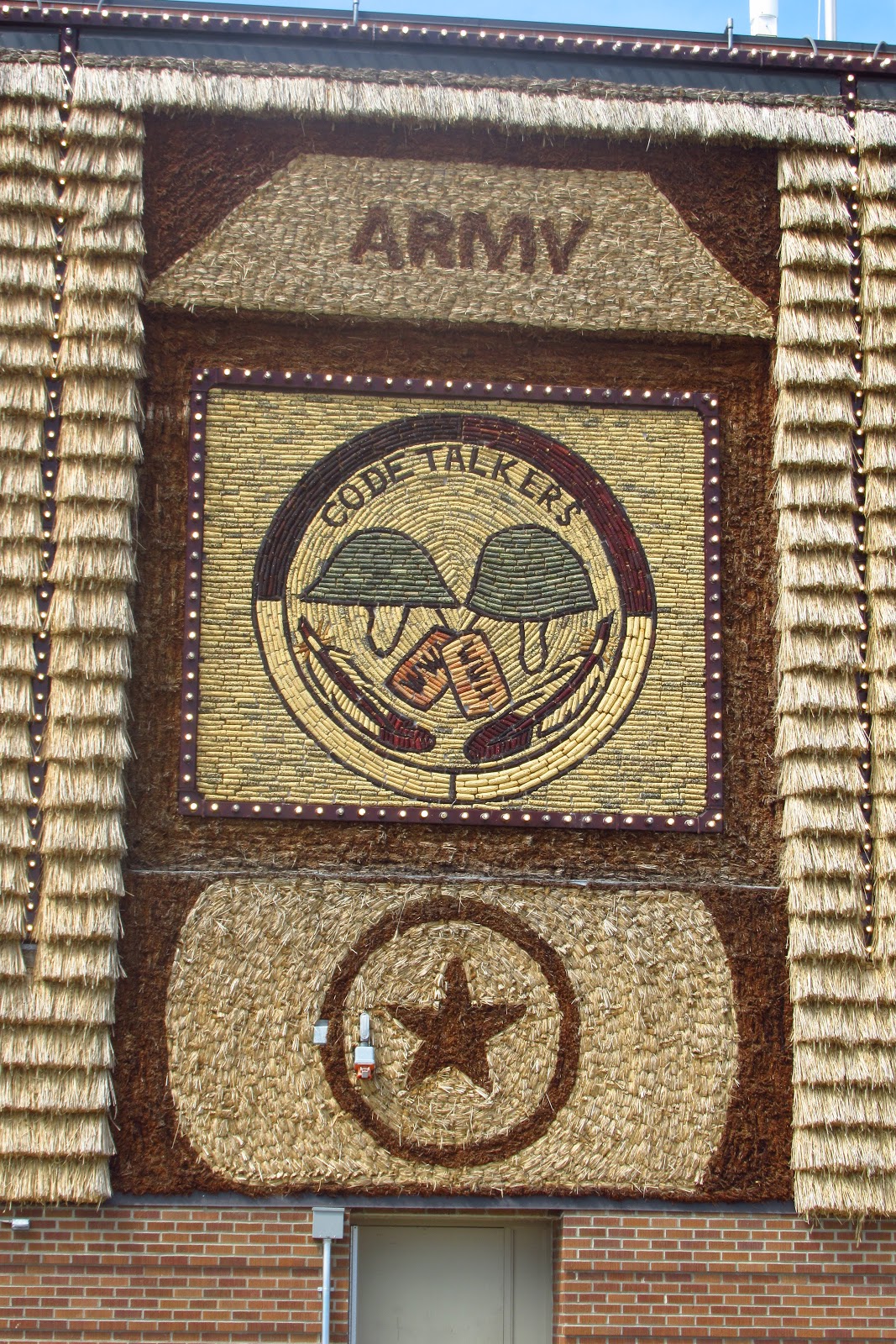
It is used as a local event venue (acts like Blood Sweat and Tears, Clint Black, and others are on tap for this summer), and of course the Mitchell High School graduation is held here, just because they can.
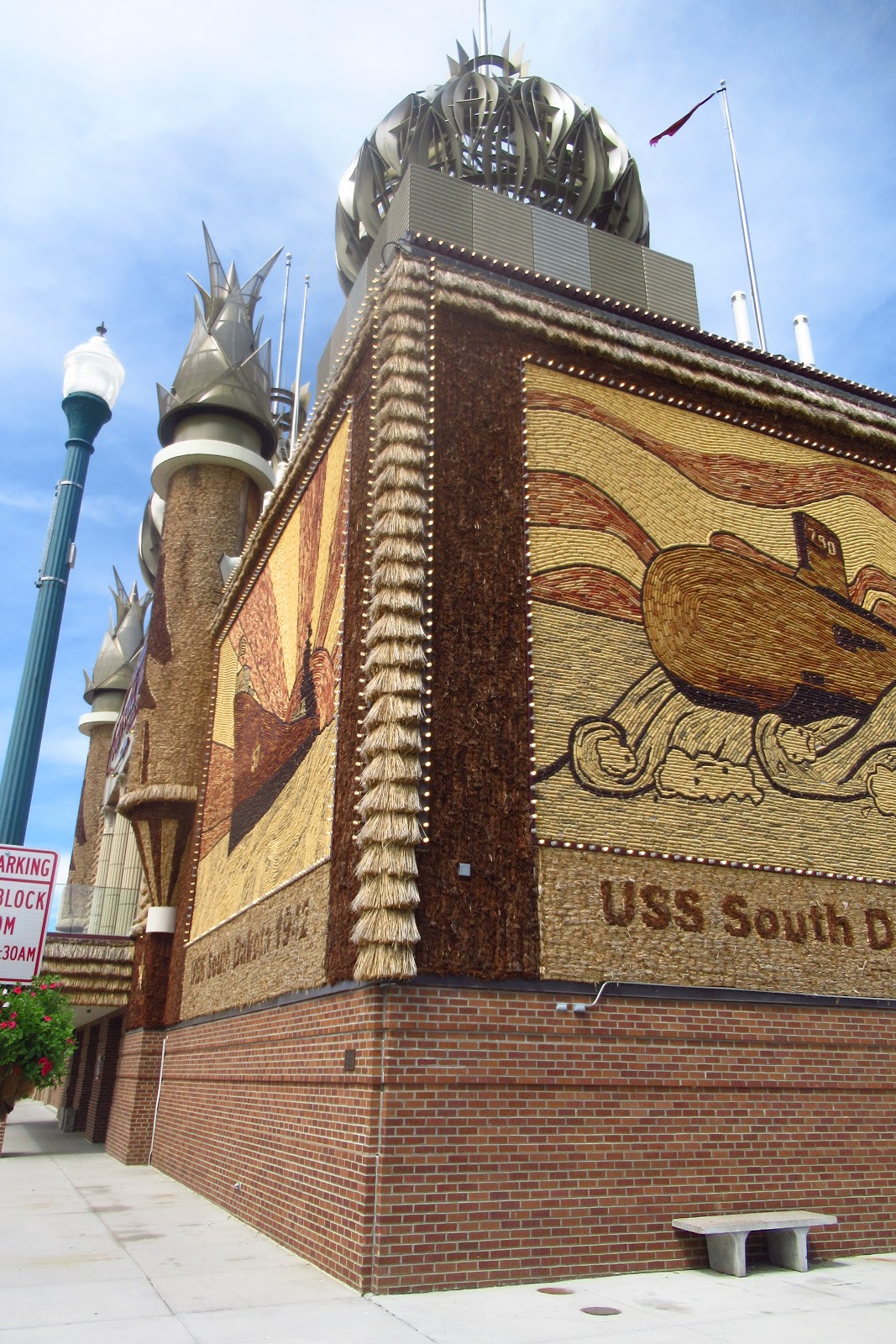
The murals are ripped down and replaced with new ones every year, costing $130,000 and 4+ months of effort, and they have a Corn Palace Festival in August to celebrate (what else?) everything corn.

Lastly, we wouldn’t want to promote any South Dakota stereotypes, but this was proudly displayed outside an RV in the campground. Proceed with your own conclusions.
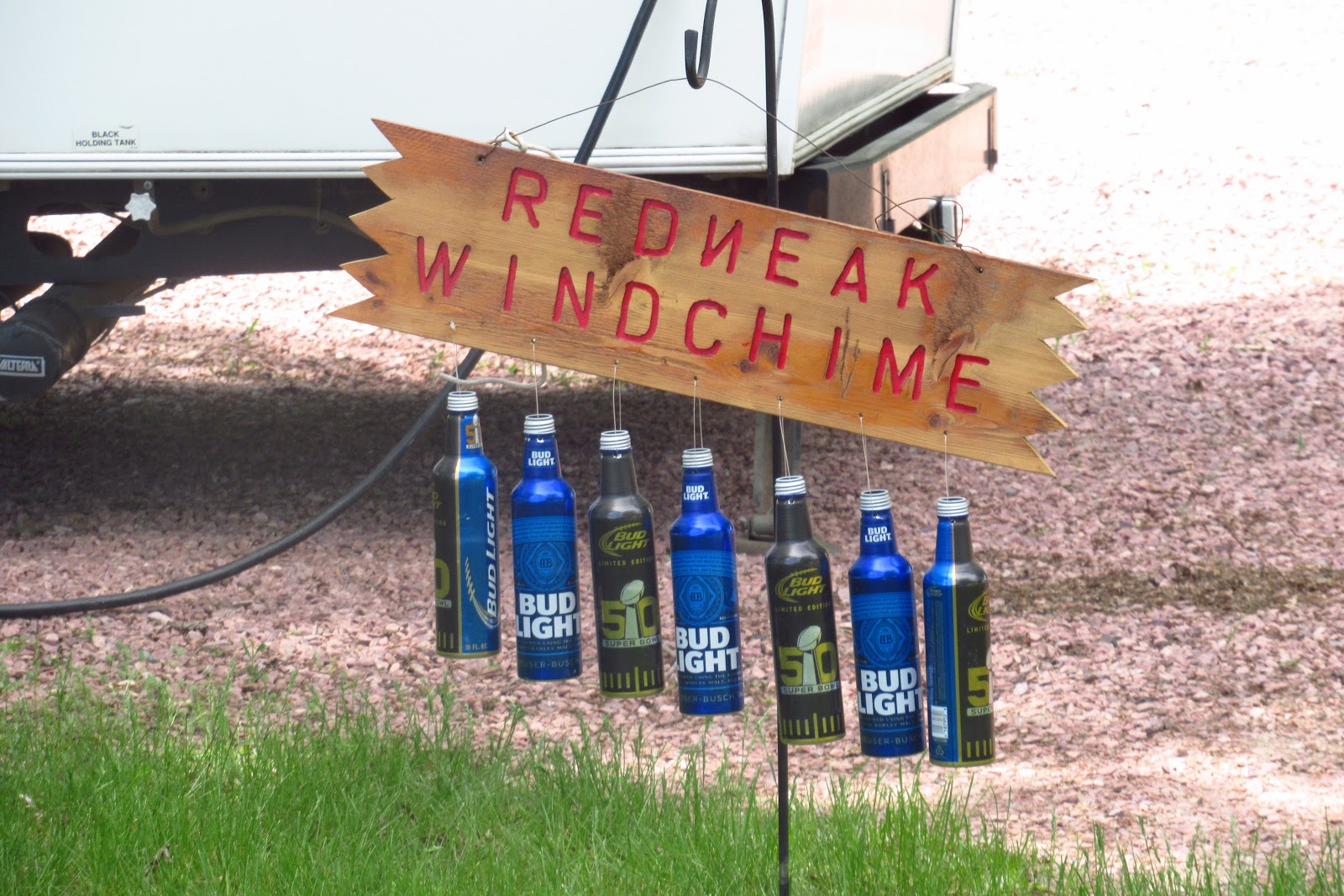
We leave South Dakota with a new appreciation for the state, and excited about our next destination: Minnesota!
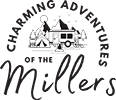

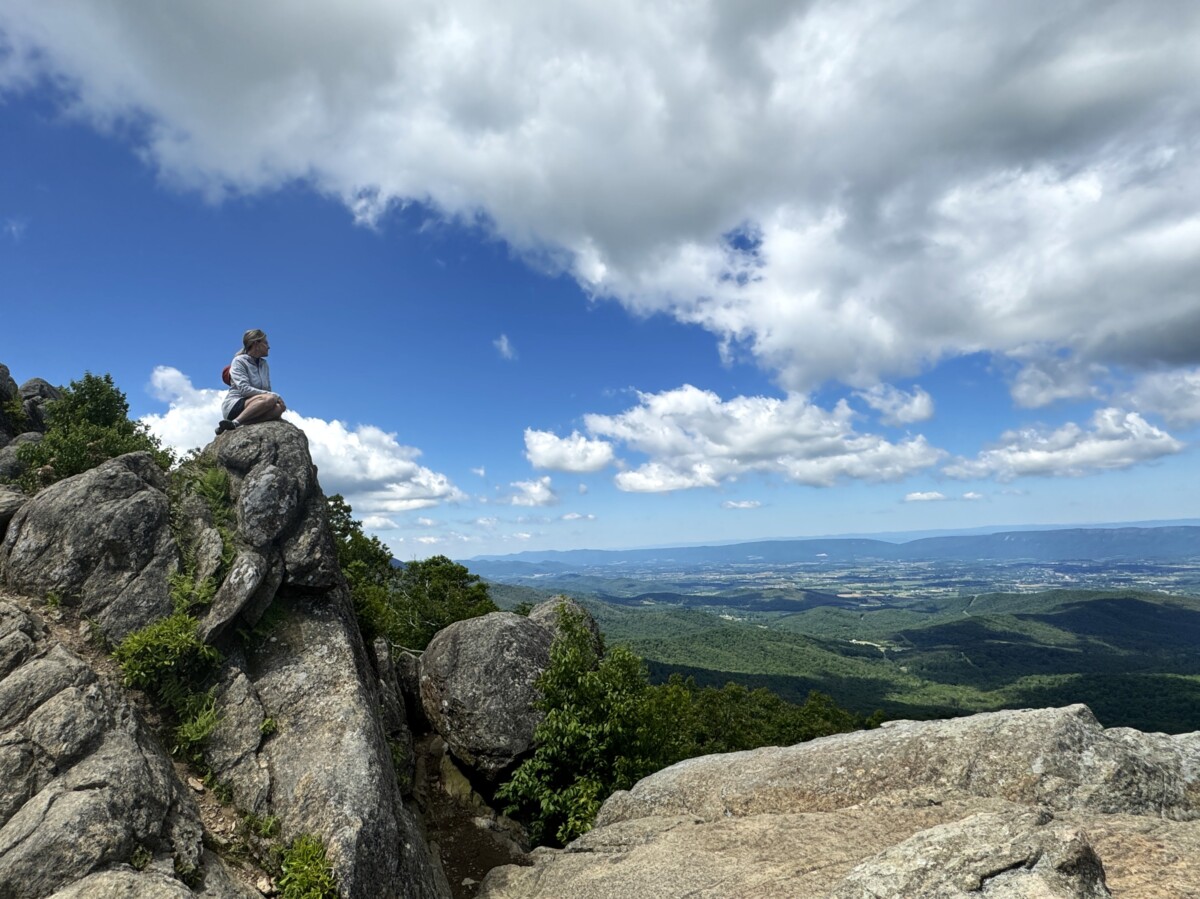
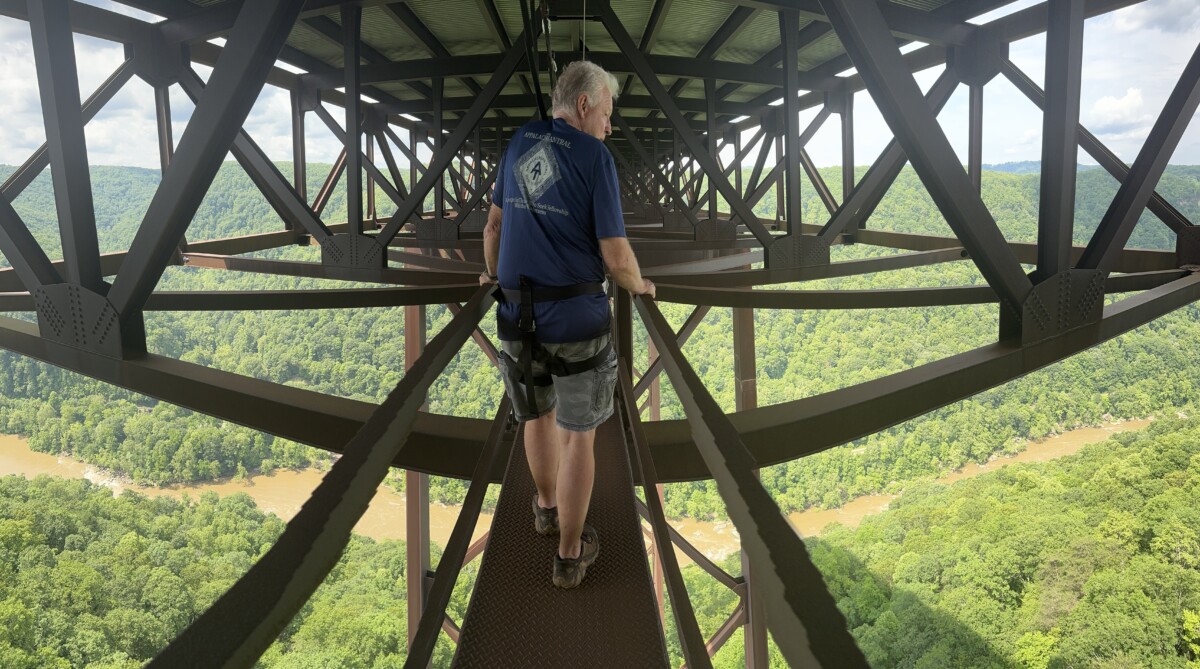
It was so much fun to read this post as I laughed out loud several times. Great writing and wonderful times.